
Vivid story setting description: Examples and insights
Vivid story setting descriptions helps us anchor a story’s action in place. Here are story setting description examples that reveal the varied functions of setting description
- Post author By Jordan
- No Comments on Vivid story setting description: Examples and insights
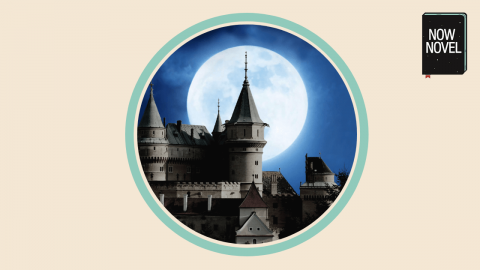
Vivid story setting descriptions helps us anchor a story’s action in place. Listed below are story setting description examples that reveal the varied functions of setting description.
1. Use setting description to highlight characters’ turning points
What characters do in a place tells us a lot about their personality. A change of setting, too, can reveal an important moment of change in a character’s life:
Example of a watershed moment setting description
In Zadie Smith’s White Teeth (2000), Archie Jones’s first encounter with his future wife is in a post-war café. The details of the setting reveal the life-affirming pleasure romantic interest brings after World War II:
The first spring of 1946, he had stumbled out of the darkness of war and into a Florentine coffee house, where he was served by a waitress truly like the sun: Ophelia Diagilo, dressed all in yellow, spreading warmth and the promise of sex as she passed him a frothy cappuccino. Zadie Smith, White Teeth (2000), p. 8
The simple café description is brief but effective. All the details of setting suggest renewal and rebirth after the war’s ‘darkness’. It’s the ‘first spring’, and his future wife is dressed in summery yellow. The ‘frothiness’ of the cappuccino even has a fecund quality (in ‘promising’ sex).
Here, this vivid description conveys Archie’s optimism in a watershed moment – leaving behind the horrors of war for new post-war possibilities. Use setting description similarly to highlight characters’ emotional states and key transitions.
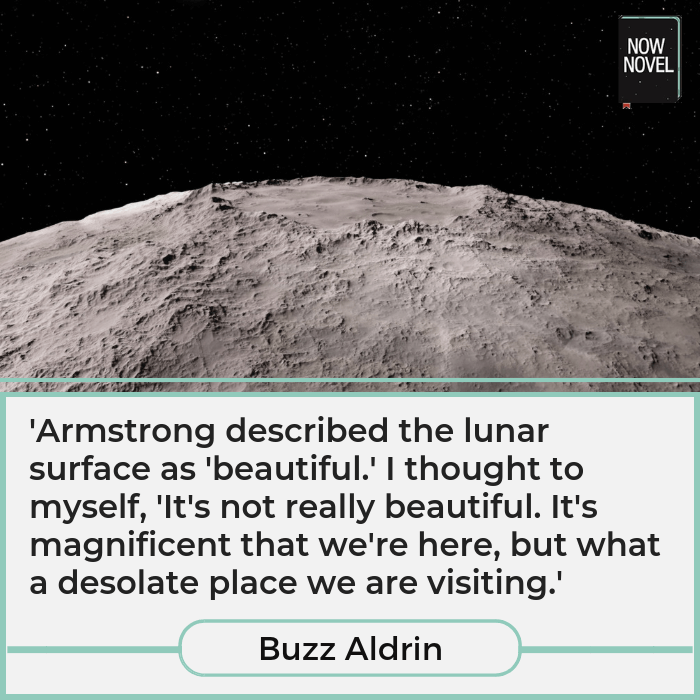
2. Reveal characters through their homes and haunts
The places where characters spend much of their time reveal much, too. A home or a favourite restaurant , for example, may reveal characters’ connections, passions, and more:
Setting description example in which home reveals character
In Kent Haruf’s novella Our Souls at Night (2015) he explores the intimacy that grows between an elderly man and woman who start having sleepovers for company. Here, Haruf describes the first time the man, Louis, is left alone in Addie’s home (the woman):
While she was out of the room he looked at the pictures on her dresser and the ones hanging on the walls. Family pictures with Carl on their wedding day, on the church steps somewhere. The two of them in the mountains beside a creek. A little black and white dog. He knew Carl a little bit, a decent man, pretty calm, he sold crop insurance and other kinds of insurance to people all over Holt County twenty years ago, had been elected mayor of the town for two terms. Kent Haruf, Our Souls at Night (2015), p. 11
Seeing Addie’s photographs via Louis’ eyes, we get a sense of her and her late husband’s relationship, and Carl’s character, too. Description of Addie’s home supplies background, yet without it being an info dump – it is relevant to the action (Louis’ being left alone and looking around).
Because Louis and Addie have already at this point discussed having sleepovers, Louis’ focus is on other men in Addie’s life, too, and he has some anxiety around them. After the above description, we read:
Louis never knew him well. He was glad now that he hadn’t.
This suggests unease around the boundaries of relationships, of ‘who belongs to whom’. The photographs in Addie’s home help to convey the uncertainty and newness of Louis’ and Addie’s arrangement.
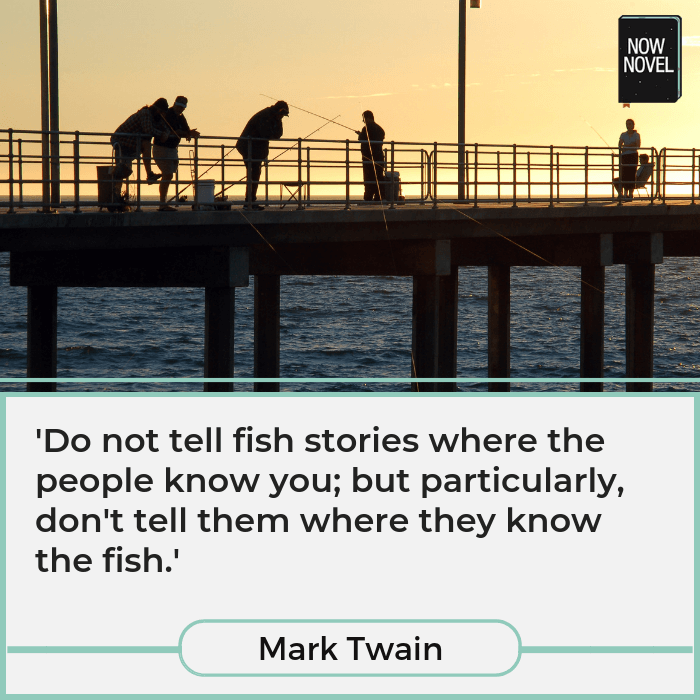
3. Build tense or suspenseful situations
Many powerful setting description examples create suspense or a sense of urgency. Take for example the following from Barbara Kingsolver’s The Bean Trees (1990):
Example of setting description adding tension/urgency
Kingsolver’s novel tells the story of a young woman from Kentucky named Taylor Greer who unexpectedly becomes a mother to an abandoned baby. At this point, she has recently been handed the girl at a gas stop on her route west:
My car has no actual way of keeping track of miles, but I believe it must have been fifty or more before we came to a town. It was getting cold with no windows, and the poor little thing must have been freezing but didn’t make a peep. Barbara Kingsolver, The Bean Trees (1990), p. 19.
The simple description of the windowless car creates a sense of tension and urgency, as we realize Taylor’s worries are greater than her own needs now. She could perhaps shiver her way on, but with a baby to consider she needs to find warmer shelter. The setting description thus immediately lends her arrival in the town urgency as well as relief.
Think of ways setting may affect your characters’ choices and needs and increase (or reduce) their intensity. These small moments create push and pull, forward momentum and ease, keeping characters’ paths dynamic and interesting.
4. Describe setting to create tone and mood
A detailed description of a setting also helps to establish tone and mood. Is the world your characters inhabit brimming with life and joy or a desolate wasteland? Is it a claustrophobic cityscape or an expansive rural haven? Great setting description conveys:
- How places feel (whether they’re relaxing, frightening, intriguing, ominous, bleak, etc.)
- What the character of a place is (place, like a person, may seem friendly, severe, harsh, warm, inviting, and so forth)
Setting description examples that create tone and mood
The opening to Mervyn Peake’s gothic epic The Gormenghast Trilogy conveys a strong sense of the dark majesty of Gormenghast castle:
Over their irregular roofs would fall throughout the seasons, the shadows of time-eaten buttresses, of broken and lofty turrets, and, most enormous of all, the shadow of the Tower of Flints. This tower, patched unevenly with black ivy, arose like a mutilated finger from among the fists of knuckled masonry and pointed blasphemously at heaven. At night the owls made of it an echoing throat; by day it stood voiceless and cast its long shadow. Mervyn Peake, Titus Groan (1946), p.7
The ornate style of Peake’s prose here mirrors the ornate, ‘time-eaten’ architecture of the fortress. Peake’s descriptive language here is full of images that suggest brute physical strength. The tower is an ‘echoing throat’, the masonry resembles ‘knuckled fists’. The word choice (e.g. the tower resembling a ‘mutilated’ finger) creates spooky eeriness.
Also consider other factors when looking at fictional settings such as time of day, seasons or months of the year, and the time period that your story is set in. Remember to use sensory details when writing setting too: the briny smell of a harbor, or the feel of the hot scorching tropical sun on your protagonist’s skin.
To recap, you may use descriptions like the above story setting description examples illustrate to:
- Draw attention to changes and turning points in characters’ lives: Winter giving way to spring, war giving way to peacetime.
- Reveal characters through the places they frequent (and what these places’ details tell your reader about them).
- Build tense or urgent aspects in a character’s situation: Like Taylor Greer rushing to find a warm place for her new baby, how might your characters’ environs shape or necessitate their next moves?
- Create tone and mood: How do the describing words you choose to describe places build towards an atmosphere?
Read more descriptive writing examples and tips in our complete guide to description.
Get help developing your story settings. Use the Now Novel story dashboard to outline your core setting and creating additional story locations by answering easy step-by-step prompts.
Related Posts:
- Story setting ideas: 6 effective setting examples and tips
- Elements of setting: How to create a vivid world
- Novel settings: 7 tips to get setting description right
Jordan is a writer, editor, community manager and product developer. He received his BA Honours in English Literature and his undergraduate in English Literature and Music from the University of Cape Town.
Leave a Reply Cancel reply
Your email address will not be published. Required fields are marked *
Pin It on Pinterest

No products in the cart.
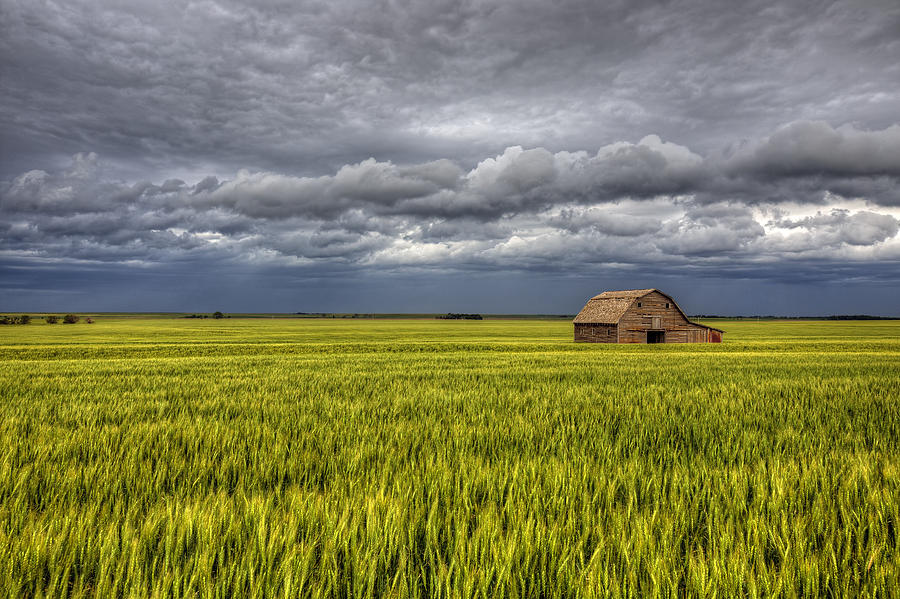
A Look at Masterful Setting Description
Masterful writing must seep into every corner of a novel. We looked briefly at the description of characters in the last few posts , mostly drawing from just one novel of James Lee Burke’s. I could easily write a year’s posts highlighting masterful writing from any one of his novels. And in the series, I’ll be pulling more examples from his books.
When we talk about description, we’re covering wide territory. Narrative is, essentially, description, and via narrative we describe characters, setting, situations, and insights.
As we saw in those examples from Burke’s novel Wayfaring Stranger , description limited to merely physical components only goes so far to shine a light on the POV character’s personality. Every bit of narrative description needs to be purposeful in order to be masterful.
Yes, what a character notices about another’s hairstyle or clothing can bring out the POV character’s tastes and opinions, but there is so much more that great description can accomplish, and few writers think carefully about how to wield description in a powerful way.
When description is discussed, usually character and setting are the two most obvious novel components of concern. Every time your POV character moves into a new space—walks out a door into the outdoors, enters a building—some description is needed.
Please, Do Your Homework!
Determining how much and what kind of description can be a challenge, and this is why I’m taking the time to go deep into masterful writing: because the best way to learn how to know how much and what kind is to study great writers in your genre.
Genre is important! I continually emphasize this. And I sadly note how many manuscripts I edit and critique that the author claims is a specific genre (suspense, light romance, etc.) that turn out to be anything but. Often it’s this very component that is at odds with their intent: the type of description they have in their scenes is not appropriate to the genre.
That problem usually spreads into all other aspects of their novel as well (dialogue, pacing, tension, plot elements).
I don’t know why aspiring authors resist doing their homework. If you plan to be a surgeon, you probably wouldn’t balk at having to do a bit of studying to learn things like physiology and anatomy. So why don’t writers take the time to learn the anatomy of excellent writing?
The way you do that is by spending time with your nose in great books. And don’t just read casually; read to learn craft.
Your niche genre will give you parameters for description. The type, style, length, word choice, and placement of character and setting description for a space opera is going to be very different from a high-action suspense thriller, which will greatly differ from a literary relational drama.
Within subgenres you may see a lot of variation and personal style, of course. But there are parameters in common, and those are the ones you need to suss out.
Don’t just write description off the top of your head. Be aware that just taking care to show description through the lens (opinions, emotions, past experience, personality) of your POV character isn’t going to ensure the description is appropriate or effective. Be sure it also perfectly fits your genre.
That said, let’s start delving into setting description. This is another topic that could fill a year’s worth of blog posts. As with character description, setting is often ignored. Or it’s casually brushed over as if the writer begrudgingly knows something ought to be said about the place her character is in and just wants to “get it over with” and move on to the interesting elements in the scene.
An attitude like that shows a complete lack of understand of how powerful setting is.
Setting is perhaps the most versatile and useful element in fiction. It can reveal character motivation, backstory, past trauma, and the story’s cast, as well as reveal emotion and supply tension.
While I’m tempted to go into all the many ways setting can be used effectively in fiction, I’ll restrain myself and instead direct you to two excellent resources that I highly recommend every writer purchase and read thoroughly: The Rural Setting Thesaurus and The Urban Setting Thesaurus , by Angela Ackerman and Becca Puglisi. Everything you need to know about writing masterful setting can be found in these two volumes.
Using sensory detail is the key to bringing setting alive. And again, it’s not about coming up with a few random sights, smells, sounds, or textures but about carefully choosing these elements via POV so that they not only bring a locale to life but share something helpful about the character experiencing the setting.
As with character description, what your POV character notices should tell the reader something about him. It shouldn’t be just a list of factual, objective details. Characters, as with real people, should be affected by the setting they’re in, and that’s why carefully choosing where to set your scenes is important.
This description comes from Carlos Ruiz Zafón’s masterpiece Shadow of the Wind :
We walked down the stairs again, and when we reached the ground floor, Julián made his way to the library. The shelves were empty, the fireplace choked with rubble. The walls, a deathly pale, flickered in the breath of the flame. Creditors and usurers had managed to remove every last bit of it, most of which must be lost in the twisted heaps of some junkyard by now. . . .
When Julián comes to a door hiding a painful memory and dark secret, he kicks it in rage and forces his way inside.
A glutinous darkness came at us from the other side. A little further back, the form of a staircase could be discerned. Black stone steps descended until they were lost in shadows.
This place evokes tremendous emotion and memory for Julián, but the POV character Daniel is narrating, and so “his” choice of words” embody what he is experiencing as he looks around and watches what transpires. This is a place that holds secrets of cruel killings and death, and so Zafón deliberately uses words and phrases like “deathly pale,” “flickered in the breath of the flame” (giving the feel of tenuous, frail life), “twisted heaps,” and “glutinous darkness.”
Even using simple words like black and lost and shadows connect to the events, memories, and emotional content this setting holds for Julián.
A master wordsmith will consider every word and choose carefully when depicting a setting.
Weather and Mood
One other important function of setting description is to set a mood, and the choice of words used bear that weight.
Here is another passage from the same book, which brings mood and weather into play:
That Sunday, clouds spilled down from the sky and swamped the streets with a hot mist that made the thermometers on the walls perspire. Halfway through the afternoon, the temperature was already grazing the nineties as I set off towards Calle Canuda for my appointment with Barceló, carrying the book under my arm and with beads of sweat on my forehead. . . . A grand stone staircase led up from a palatial courtyard to a ghostly network of passageways and reading rooms. . . . I glided up to the first floor, blessing the blades of a fan that swirled above the sleepy readers melting like ice cubes over their books.
Zafón’s passage combines the elements of the weather with bits of physical description, setting a mood for the locale that affects what his character notices. He’s keenly aware of the heat, and though he never thinks Boy, it’s hot , we sense his discomfort by the beads of sweat, the appreciating for the swirling fan, and his observation of the melting readers.
Here’s another passage from the same book, again, showing how the weather description helps set the mood of the character:
A reef of clouds and lightning raced across the skies from the sea. . . . My hands were shaking, and my mind wasn’t far behind. I looked up and saw the storm spilling like rivers of blackened blood from the clouds, blotting out the moon and covering the roofs of the city in darkness. I tried to speed up, but I was consumed with fear and walked with leaden feet, chased by the rain. I took refuge under the canopy of a newspaper kiosk, trying to collect my thoughts and decide what to do next. A clap of thunder roared close by, and I felt the ground shake under my feet. . . . On the flooding pavements the streetlamps blinked, then went out like candles snuffed by the wind. There wasn’t a soul to be seen in the streets, and the darkness of the blackout spread with a fetid smell that rose from the sewers. The night became opaque, impenetrable, as the rain folded the city in its shroud.
We’ve only touched on setting in this post, looking primarily at mood and character’s state of mind as it’s mirrored or embodied by the setting. Using strong and effective verbs and adjectives will help you craft setting descriptions that are masterful.
Why not spend some time working on your setting descriptions so that every word you use serve a purpose in revealing your character’s personality and state of mind in that moment?
Do you spend time thinking about the weather in your scenes and how it can set mood and reflect the mood of your character? Got any nice weather passages from a novel you would like to share in the comments?
Check out the next post on this topic.
Search Posts Here
Subscribe to my blog, similar posts.
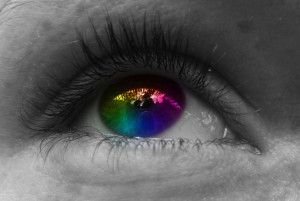
5 Reasons to Consider Using an Omniscient Narrator
Today’s guest post is by Brenda Berg. Take any writing class, and talk to any editor, and he’ll say “never…
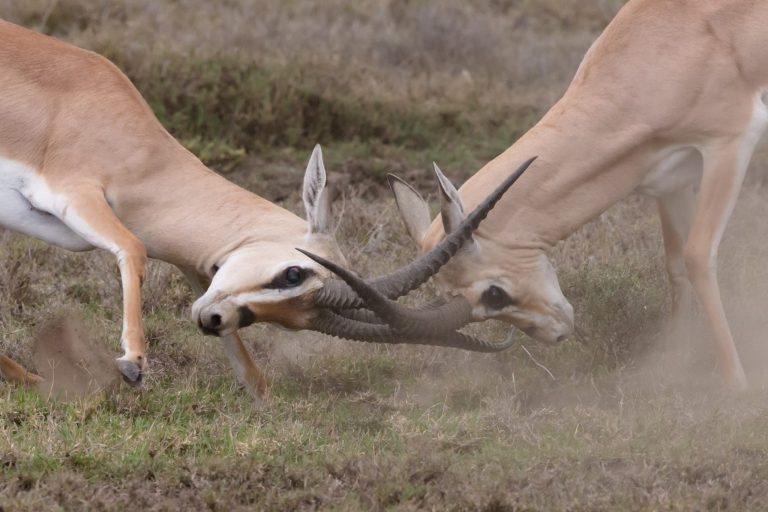
How Does Internal Conflict Fit into the Character’s Arc?
Today’s guest post is by Becca Puglisi. If you’re writing a story in which your character will need to evolve…
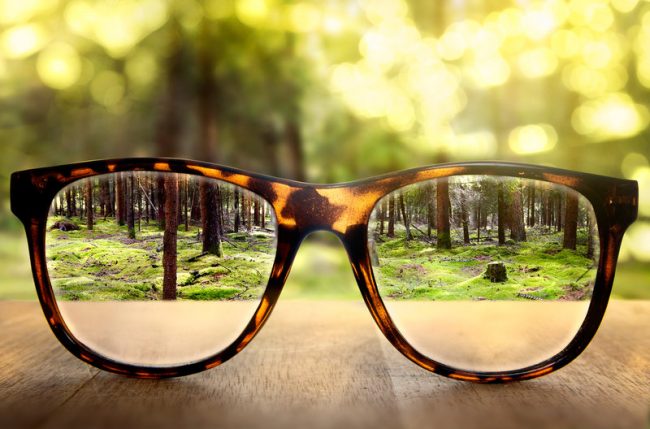
Description Errors That Result from POV Limitations
It’s important for writers to convey the description of setting and characters through the POV character’s eyes and emotions. But…

How to Go Big in Your Fiction
Today’s post is by Steve Alcorn. How do you make your story memorable long after the last page has been…

Do You Really Know How to “Show, Don’t Tell”?
Part of fast-tracking to success lies in writing novels that readers can quickly sink their teeth into. That usually means…

From Outline to the Nanowrimo Finish Line
In honor of Nanowrimo, I’m reprinting a post I ran a few years ago. Whether you’re participating or not, check…
Once again, thank you so much for sharing your insight and clear examples with your followers. I learn so much here. I have shared this post online. Enjoy your holidays!
20-something years ago I read Stephen King’s IT. What I discovered was not a story about a scary clown but a book to be studied if one (me actually) was willing the learn the craft of excellent writing.
IT is so deep in character. He goes to the core. There is even a passage on Pennywise that actually makes us care. King’s book is my textbook. I love developing characters and that book has taught me more than any book I’ve ever read.
It is vital for every writer to seek out their own IT. Study that book, see how the author did it. Readers hate lazy writers. Remember that!!!!
Great points! Thanks for sharing that.
It had begun to snow again. He watched sleepily the flakes, silver and dark, falling obliquely against the lamplight. . . . Yes, the newspapers were right: snow was general all over Ireland. It was falling on every part of the dark central plain, on the treeless hills, falling softly upon the Bog of Allen and, farther westward, softly falling into the dark mutinous Shannon waves. It was falling, too, upon every part of the lonely churchyard on the hill where Michael Furey lay buried. It lay thickly drifted on the crooked crosses and headstones, on the spears of the little gate, on the barren thorns. His soul swooned slowly as he heard the snow falling faintly through the universe and faintly falling, like the descent of their last end, upon all the living and the dead – James Joyce, The Dead
Isn’t his cadence and repetition poetic! Love it!
Leave a Reply Cancel reply
Your email address will not be published. Required fields are marked *
Save my name, email, and website in this browser for the next time I comment.
[related_books]
Next Steps for Your Manuscript

Free Amazon Email Course

Guest Blogging

Get your Free Ebook!
Subscribe to my email blasts to level up your writing and be notified of upcoming events and offers!
Review Cart
- Skip to primary navigation
- Skip to main content
- Skip to primary sidebar
- Skip to footer
Descriptive Writing: Definition, Tips, Examples, and Exercises
Descriptive writing is about using the power of words to arouse the imagination, capture the attention, and create a lasting impact in the mind of the reader. In this article, you'll learn how to employ descriptive elements in your writing, tips to enhance your descriptive writing skills, and some exercises to better yourself at it.

Descriptive writing is about using the power of words to arouse the imagination, capture the attention, and create a lasting impact in the mind of the reader. In this article, you’ll learn how to employ descriptive elements in your writing, tips to enhance your descriptive writing skills, and some exercises to better yourself at it.
Read the two sentences given below:
- I felt tired at work today.
- As the day wore on at work, I felt a cramp beginning to form at the nape of my neck, my eyes began to feel droopy, and the computer screen in front of me began blurring.
Which one of the two do you find more interesting to read? Most definitely the second one. This is because, while the first sentence merely tells you directly that ‘you felt tired at work today’, the second one explains the same experience in a much more vivid and relatable manner.
From this you can see that even something as simple as the above sentence can be transformed using literary devices that aid visualization, into something that someone can relate to. This is what descriptive writing is all about: heightening the sense of perception and alluring your reader to read ahead, because you have so much more to say.
Good Examples of Descriptive Writing
Given below are a couple of good pieces of descriptive writing from authors who know their business.
‘But the door slid slowly open before Lupin could reach it. Standing in the doorway, illuminated by the shivering flames in Lupin’s hand, was a cloaked figure that towered to the ceiling. Its face was completely hidden beneath its hood. Harry’s eyes darted downwards, and what he saw made his stomach contract. There was a hand protruding from the cloak and it was glistening, greyish, slimy-looking and scabbed, like something dead that had decayed in water…’ – Harry Potter and the Prisoner of Azkaban by J.K. Rowling
‘I don’t know what I’d expected but it was something different than I saw. She looked unexpectedly young. Or, I suppose said better, she looked unexpectedly “not old”. Her hair, which was completely white, had a yellowish cast that could almost have been mistaken for a pale blond, and it was loose around her shoulders. And long. Longer than mine. No doubt she normally wore it pulled up in a bun, and such a style would have given her a more predictable little-old-lady look, but the way it was here now, parted on the side – long, loose, and straight – she seemed ageless as an ancient sculpture. This sense was enhanced by her skin. Though it had the fragile crepeyness of age, she had few wrinkles, especially across her forehead, which was smooth to a point of being almost waxy looking. She was of obvious northern Germanic heritage, with pale eyes and prominent features. Although she was not overweight, her bones were big and blunt, giving the impression of a tall, sturdy woman.’ – Twilight Children by Torey Hayden
Why be Descriptive While Writing?
- The purpose of descriptive writing is to inspire imagination. When you put your mind into making a piece of writing more descriptive, you automatically begin to pay attention to detail and refine your perception about things. You begin to imagine them as much more than, say a party hat or a hard-bound book . You begin to look at them as a tall, pink, pointed paper hat with tassels , and a book that had a gleaming golden spine, and weighed a few good pounds .
- The next, and probably the most important benefit of descriptive writing is that in the process of trying to make the reader visualize what you want to say, you tend to use more interesting words. You want to convey a mental picture to your reader. So you’re bound to use words that might be unconventional or less-used. You will want to find words that exactly describe what you want to say, and will look for different words that mean the same. This will help you suitably build your vocabulary.
- The success of descriptive writing lies in the details. The more detailed your depiction of a plot or a character or a place is, the more you engross your reader. You become a keen observer and minder of details. You pay attention to the tiniest bits of information and appearance, which in turn helps you transfer the details into your writing.
- Since you have picked something to describe and have observed all its details, you are sure to understand the subject better. You may even come across bits and pieces that you may have missed the first time you looked at the object/subject in question. Thoroughly understanding what you’re going to write about is exceedingly important to the process of writing about it.
Tips you Can Use Identify what you’re about to describe
As you start with descriptive writing, identify exactly what you are setting out to describe. Usually, a descriptive piece will include the depiction of a person, a place, an experience, a situation, and the like. Anything that you experience or perceive about your subject can be the focal point of your descriptive writing. You build a backdrop by identifying an aspect of a subject that you want to describe.
Decide why you’re describing that particular aspect
While it can be a wonderful creative exercise to simply describe anything you observe, in descriptive writing, there is often a specific reason to describe whatever you have set out to describe. Tapping this reason can help you keep the description focused and infuse your language with the particular emotion or perspective that you want to convey to your readers.
Maintain a proper chronology/sequence Sometimes, you may get so caught up in making your work colorful and creative that you may end up having a mash-up of descriptions that follow no particular order. This will render the effort of writing useless as the various descriptions will simply confuse the reader. For instance, if you want to describe characters in a particular situation, begin by describing the setting, then proceed to the most important character of that particular situation, and then to the least important one (if necessary).
Use Imagery Imagery is the best tool you can employ in descriptive writing. Since you cannot show your reader what you are imagining, you need to paint a picture with words. You need to make the depiction of your imagination so potent that your reader will instantly be able to visualize what you are describing. However, don’t go overboard. Make sure that the focus does not dwindle stray. Keep your descriptions specific to the subject in question. The writing must be able to draw in the reader; hence, the writer should say things that the reader can relate to or empathize with. An introductory backdrop can often provide an effective setting for the remaining part of the piece. Great descriptive writing has the ability to lure the reader, enticing him or her to continue reading right to the end. While giving the details is important, it is how they are presented that makes the difference.
Hone the senses One of the most effective ways to make the experience you are describing vivid for your reader is to use the five senses: smell, sight, sound, taste, and touch. When the descriptions are focused on the senses, you provide specific and vivid details in such a way that it shows your reader what you are describing. So, when you describe a subject, depict it in such a manner that it involves the reader’s possible sensory interpretations. It must make the reader imagine what he would see, hear, smell, taste, or feel when he reads what you have written.
She gently squeezed the juice out of the plump, red tomato. She blended this juice into the simmering mix of golden-brown onions and garlic in the pan, and watched as they melded into each other. She then added the spice mixture that she had prepared, and the air was permeated with a mouth-watering aroma.
Use strong nouns and verbs effectively, adjectives intelligently It is true that the purpose of adjectives is to describe a subject, but overuse of adjectives in descriptive writing can render the piece shallow and hollow. Hence, make it a point to use other parts of speech to express the same sentiment. You’ll be surprised how effectively nouns, verbs and adverbs can be used to describe something, sometimes even better than adjectives alone. For instance, look at the two sentences below.
- The flowers were as fresh as the morning dew.
- The flowers had a freshness that could only equal that of the glistening morning dew.
The first sentence has used an adjective (fresh) to describe the flowers. It is a good description too, because the comparison to morning dew is something that will immediately put the reader in the sense of mind that you want. The second sentence too has compared the freshness to morning dew, but has used a noun (freshness) and a verb (equal) to do so, and in the process has probably enticed the reader to continue reading, more than the first sentence.
Pick related words Before you actually begin writing, it is always a good idea to build a word bank of related words and ideas. For instance, if you are going to be describing a flower arrangement, you could jot down a few ideas before you start describing it, like: vase, color, types of flowers, leaves, stem, style, shape, fresh, etc. Once you have these basic words, you could start descriptive sentences for each one. Then, carry on from there.
Display passion Impact is what you’re looking to create in the minds of your readers. You want your readers to relate and empathize with what you’re writing. This will be close to impossible if your work does not reflect the passion that you feel for it. Make them feel what you feel with the words you write. Language that relates to powerful emotions such as love, hatred, admiration, disgust, etc., can convey the range and intensity of the sentiment that you are trying to express. Use them to your favor and get the desired effect.
Exercises to Enhance Descriptive Writing
Given below are some simple, yet effective exercises that you can use to better yourself at descriptive writing.
Exercise 1 Decide on an everyday action, say ‘making a pot of coffee’ and write about it in a descriptive manner. Give yourself 3 words that you’re not allowed to use while writing about it. You’ll see yourself reaching for the thesaurus, which will help improve your vocabulary.
Exercise 2 Pick random objects like a hat, a burger, a chair, etc., and place them before you. Enlist the different names that these objects can be called. Describe each of the objects in sentences that have more than 15 words each. Be as imaginative as you can.
Get your ‘assignments’ read by an objective person to see if they can relate to and understand properly what you have tried to convey.
Make descriptive writing a rewarding experience, both for your reader and yourself. If you like what you write, chances are that your reader will too. As is evident, having a comprehensive vocabulary is the key to good descriptive writing. But mere vocabulary will fall short if your piece lacks passion, logic and interest. The trouble is that it can easily become an incoherent rambling of senses and emotions. To avoid that, present what you are writing about in a logical and organized sequence of thoughts, so that the reader comes away from it with a cogent sense of what you have attempted to describe.
Like it? Share it!
Get Updates Right to Your Inbox
Further insights.

Privacy Overview
Looking to publish? Meet your dream editor, designer and marketer on Reedsy.
Find the perfect editor for your next book
1 million authors trust the professionals on Reedsy. Come meet them.
Blog • Perfecting your Craft
Last updated on May 31, 2022
What Is the Setting of a Story? How to Write 3 Types of Settings
“When you leave a beautiful place, you carry it with you wherever you go,” lifestyle author Alexandra Stoddard once wrote. She was referring to real-life places, but the same is true of fictional ones — the setting of a story can be just as affecting and memorable as a place you’ve actually visited.
But how do authors choose the right settings for their stories, and what tactics do they use to bring them to life? Find out in this comprehensive guide to story setting, complete with definition, examples, and tips for writing a setting that readers will remember forever!
What is the setting of a story?
The setting of a story refers to the time, place, and environment in which narrative events unfold. Authors use setting to immerse readers in a specific time period, geographical location, or even a vividly imagined world. For example, The Martian by Andy Weir is set in space.
Setting serves as the backdrop to everything that happens in a story, and often contributes significantly to its atmosphere. This is why romance novels are typically set in small, cozy towns and horror stories in isolated, unnerving places (a Transylvanian castle, a cabin in the woods). Indeed, setting can be so powerful, it may even feel like a character itself!
What are the 3 types of setting?
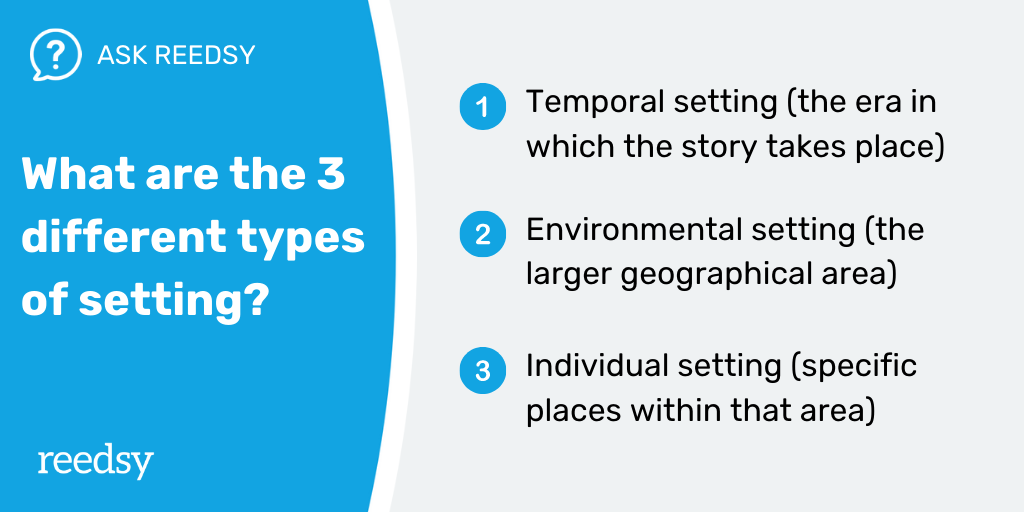
You might think of setting in terms of 3 “types”: temporal, environmental, and individual. To demonstrate these concretely, let’s look at the various settings of The Great Gatsby (insert concrete jungle joke here 🏙️).
- Temporal setting: the American 1920s, right in the heart of the Jazz Age.
- Environmental setting: southeastern New York — New York City and Long Island.
- Individual settings: Gatsby’s mansion, Tom and Daisy’s mansion, Myrtle’s apartment, the Plaza Hotel, and more.
Note that just as characters can be entire products of an author’s imagination, so often are these individual settings! (The Manhattan Plaza Hotel obviously exists in real life, but the characters’ residences in The Great Gatsby do not.) Authors frequently combine real time, real place, and invented — or at least embellished — individual settings, to ground the story in authenticity while maintaining flexibility on the details.
Tell us about your book, and we'll give you a writing playlist
It'll only take a minute!
Story setting examples
You can probably think of a dozen more setting examples. But just to solidify the notion, here are three particularly strong ones, along with passages to show how each author paints the setting of their story.
Maycomb, Alabama in To Kill a Mockingbird
Harper Lee’s unparalleled classic about American race relations in the 1930s takes place in the small town of Maycomb, Alabama. Notice how the narrator, Scout, describes Maycomb as stiflingly humid and old-fashioned, establishing the era's status quo of oppression and suffering:
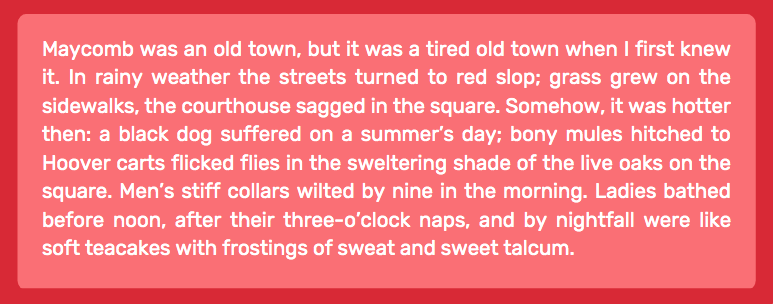
Narnia in The Lion, The Witch and the Wardrobe
Meanwhile in The Lion, The Witch and the Wardrobe , C.S. Lewis introduces Narnia as a winter wonderland full of possibilities — though it’s somewhat deceiving in that the White Witch has cursed the land to eternal cold. But it’s crucial to the narrative that Narnia appears as a still, snowy place that lulls Edmund into a false sense of security just before he meets the Witch:
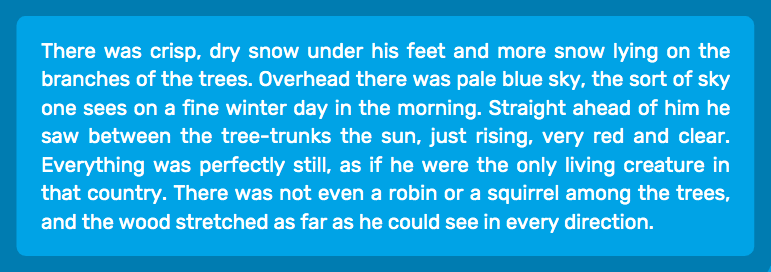
North West London in NW
For a more contemporary example, let’s look at a description of North West London in Zadie Smith’s novel NW . As part of the novel’s vision of London as a polyphonic city “containing multitudes,” Smith describes the area in terms of both former inhabitants and present-day scenery. To arrive at the complex present, she must first acknowledge the past:

Of course, each of these passages provides only a glimpse of the rest of the book. As an author, don’t just drop a paragraph of scenery description at the beginning and never mention setting again!
For setting to be effective, it needs to filter through the entire story — fortunately, this next section on how to write setting will show you how to do just that.
How to write setting in a story

1. Choose your setting wisely
Let’s talk about setting suitability: as the examples above clearly demonstrate, every great story hinges on setting. The Great Gatsby would not work if it were set during the Great Depression, and it’s almost impossible to imagine most of Zadie Smith’s books taking place anywhere other than London.
So before you start writing your story, make sure the setting fits like a glove. For some authors, this will be easy! But for others — especially those who are doing a bit of worldbuilding for a sci-fi or fantasy novel — choosing your setting may be a bit trickier.
To set you (no pun intended) on the right path, here are a few important questions to consider:
- Exactly where and when will your story take place? Take this time to nail down the details. If it’s “contemporary,” does that mean present day or ten years ago? If it’s in a certain country, what city or town? And if you have multiple settings, how long will the characters spend in each one?
- Is this setting a real place, and if so, how much research will it require to convey in good faith? If it’s merely based on a real place, how much overlap will there be?
- How will the setting of the story factor into the characters’ lives? Will it help them or prevent them from achieving their goals? If neither, why choose this setting at all?
Once you’ve answered these to your satisfaction, you can settle on your setting (as it were) and begin constructing it in more detail.
2. Focus on what’s unique
Not every element of your setting will be worth noting, so focus on what’s unique. Every city has buildings and sidewalks, but how are they different from every other city’s? If someone leans their head out the window, what do they hear besides traffic or birds? Does the town square smell like bread from the local bakery, or like pollution from a nearby factory?
Get the details straight
Again, think of your story setting almost as another character. Just as you might fill out a character profile to flesh out their quirks, you can profile your setting too! Here are some “setting profile” questions to get you started:
📜 What’s the history of this area?
🌦 What is the weather like each season?
🌇 What are the biggest landmarks of this setting?
🏡 In what sorts of residences do most people live?
🚙 How do people tend to get around (walking, driving, etc.)?
👍 Why do people like (or dislike) living (or visiting) here?
For a more exhaustive list of setting-related questions, you can check out our free worldbuilding guide — the perfect tool for creating fictional settings.

FREE RESOURCE
The Ultimate Worldbuilding Template
130 questions to help create a world readers want to visit again and again.
The natural addition to each of these questions is: and how does this affect my characters? This is where you’ll tap into the most interesting features of your setting — by considering how your characters will perceive and react to what’s around them. To quote Carmen Maria Machado: “Setting is not inert. It is activated by point of view .”
Now, with a clear sense of what you want to highlight in your environmental setting, you can move on to incorporating these features into your story.
Pro tip: When writing about places you’ve never been or have only seen as a tourist, over-emphasizing famous landmarks like Big Ben, the Eiffel Tower, and the Empire State Building will make your work read like that of an amateur. To avoid this, play around on Google Street View and discover some more quotidian hangouts for your characters!
3. Use all five senses in descriptions

As you describe each setting of your story, make sure you don’t just talk about how it looks. Instead, use all five senses: sight, sound, smell, touch, and even taste. This is especially important when writing a first person account, but also applies to other POV's — and you can check out our free course below to learn more.

FREE COURSE
Understanding Point of View
Learn to master different POVs and choose the best for your story.
You shouldn’t use all of these in every description, nor should you continuously rehash settings you’ve already described. But as a rule of thumb, each time your characters visit a new location — or experience that location in a new context (e.g. at night rather than in the daytime) — you should devote a paragraph to setting the scene.
Here’s a great example of concise and multi-sensory setting description from Leigh Bardugo’s Ninth House :
Inside, the music thumped and wailed, the heat of bodies washing over them in a gust of perfume and moist air. The big square room was dimly lit, packed with people circling skull-shaped vats of punch, the back garden strewn with strings of twinkling lights beyond. Darlington was already starting to sweat.
In just three sentences, we get four out of five senses:
- Sight (“dimly lit, packed with people”);
- Sound (“the music thumped and wailed”);
- Smell (“a gust of perfume and moist air”);
- Touch/physical sensation (“already starting to sweat”).
The rest of this party scene consists of mostly dialogue and action, but Bardugo is careful to describe each new room the characters enter, so the reader always has a clear picture of what’s happening. Indeed, the more you show rather than tell with sense-based setting descriptions, the more you’ll immerse readers in your story. Just don’t go overboard with pages and pages of detail — zero in on what’s most interesting and unique.
Which famous author do you write like?
Find out which literary luminary is your stylistic soulmate. Takes one minute!
4. Develop your characters’ relationships to the setting
Once you’ve established the characters in your story, you can dig into their relationships with the setting.
These relationships can take many forms. Say your main character has lived in the same town their entire life; they might have a longtime fondness for it, or they could resent and feel trapped by the setting. These kind of characterstics or desires can be established using a character development exercise, like the profile template you'll find below, which prompts you to dig deep into your character's background. Whatever you decide, make sure this nuance comes through in your narration!

Reedsy’s Character Profile Template
A story is only as strong as its characters. Fill this out to develop yours.
What you don’t want is a character so detached from their surroundings that their story could take place anywhere. At bare minimum, you need them to interact with the setting in specific, realistic ways. For greater impact, use setting to challenge them, assist them, or both.
💪 Setting as a challenge vs. setting as an asset
Susan Choi does an amazing job of positioning setting as a challenge in Trust Exercise , which begins with two young characters trying to walk to each other in a vast, highway-dense city:
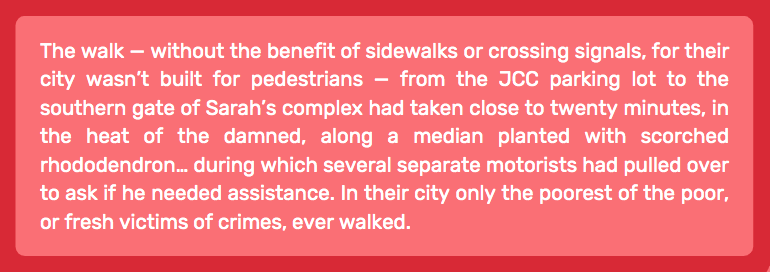
But setting doesn’t need to oppose your characters in order to feel relevant and meaningful. Here’s an example of setting as an asset, from Madeline Miller’s Circe , describing Circe exploring her new island:
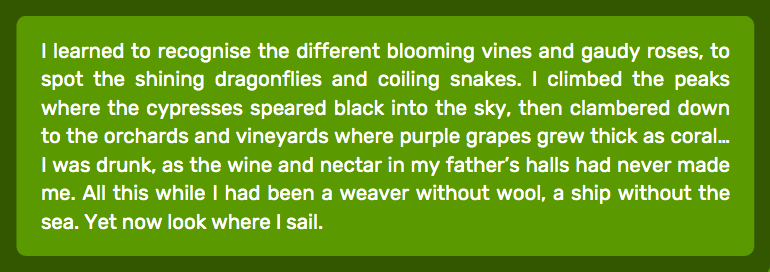
And remember, you’re not limited to one or the other! Over the course of a story, a setting may play varying roles in a character’s life, both positive and negative. Just make sure it doesn’t sit there as an idle backdrop.
5. Keep your readers oriented
The final cardinal rule of story setting is: keep your readers oriented. You don’t want people to get distracted from your plot because they’re too busy trying to untangle where the action is happening!
Ironically, one of the quickest ways to confuse readers is to give them too much setting detail. So when introducing a setting, keep the description concise, as in the Ninth House example — a few evocative sentences will do. If you have more to say about the setting, you can incorporate it later.
In terms of specific directions, again, less is more. “He walked out of his apartment building, turned left onto the road, then right onto the sidewalk, then another left onto another sidewalk” hardly makes for riveting storytelling. If you must use directions, at least ensure they’re consistent! Don’t say the police station is on the east side of town, only to describe the sun setting (a famously western phenomenon) behind it in the next scene.
These are the kinds of issues that can really throw readers off, even subconsciously — so make sure you get them straight. If you’re particularly worried about setting inconsistencies, you can always hire a copy editor to comb through your work.

An editor will ensure your setting is spotless ✨
The best copy editors are here on Reedsy. Sign up to meet them today.
Learn how Reedsy can help you craft a beautiful book.
🗺️ Consider drawing a map
Whether you’re building an elaborate world from scratch or simply want to be as accurate as possible when representing a real place, a map of your setting could help (you might even commission an illustrator to draw one for you). This will give you a more concrete sense of your setting while you’re writing, as well as streamline the reader’s experience down the line.
Here are some of our favorite fictional maps, for reference:
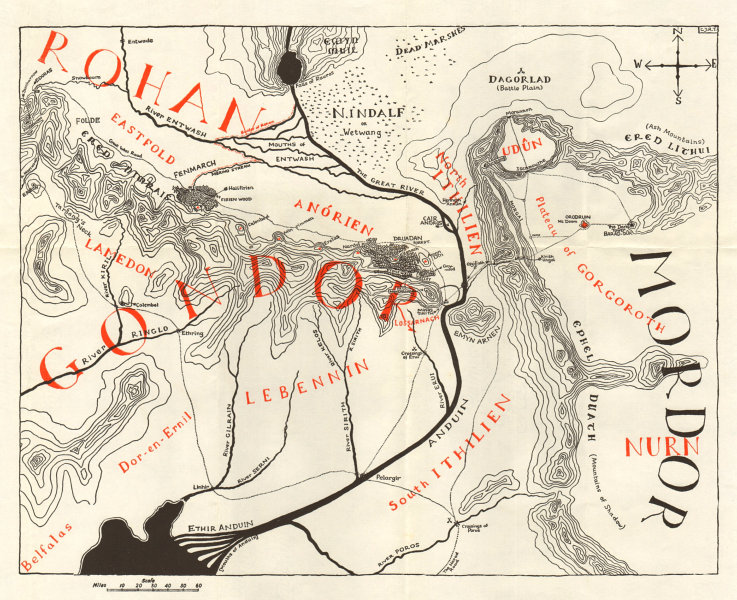
And there you have it — everything you need to know about writing the setting of a story! With a solid sense of time and place and compelling, character-based descriptions, you’ll be well on your way to conjuring a setting, like Narnia or Jazz-Age NYC, that readers won’t forget. It's an essential step to becoming a better writer .
Continue reading
Recommended posts from the Reedsy Blog

How Many Sentences Are in a Paragraph?
From fiction to nonfiction works, the length of a paragraph varies depending on its purpose. Here's everything you need to know.

Narrative Structure: Definition, Examples, and Writing Tips
What's the difference between story structure and narrative structure? And how do you choose the right narrative structure for you novel?

What is the Proust Questionnaire? 22 Questions to Write Better Characters
Inspired by Marcel Proust, check out the questionnaire that will help your characters remember things past.

What is Pathos? Definition and Examples in Literature
Pathos is a literary device that uses language to evoke an emotional response, typically to connect readers with the characters in a story.

How to Start a Children’s Book: Coming Up with Your Big Idea
If you've ever dreamed of writing a children's book but aren't sure where to start, check out this post to learn more about how you can create the perfect story for kids.

How to Become a Travel Writer in 5 Steps: A Guide for Travel Bugs
If you want to get paid to share your adventures, learn how to become a travel writer with these five tips.
Join a community of over 1 million authors
Reedsy is more than just a blog. Become a member today to discover how we can help you publish a beautiful book.
We have an app for that
Build a writing routine with our free writing app.

1 million authors trust the professionals on Reedsy. Come meet them.
Enter your email or get started with a social account:

Using sensory language for describing settings
by NikkiYoungAuthor | Apr 14, 2020
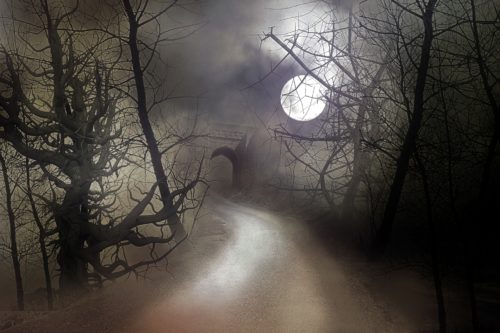
When we describe settings in our writing, it’s important to consider not only what you can see, but to use all your senses to give a full description of the sounds, scents, textures and even how it makes you feel.
Young Writer , Isobel, is here to give you the full lowdown on how it’s done. Notice how she takes you through, step by step, building from one simple sentence to a whole paragraph of descriptive writing to describe settings.
Over to you, Isobel…

So, you want to describe something. Great! Let’s just assume, for simplicity’s sake, you already have a picture or something you can describe it from.
Take this image here. Now, how do you describe this setting? The obvious thing is to start with what you can see.
The forest was dark and misty. The trees were bare and the moon was bright.
Even from just that small sentence, you can already see the problem. A brilliant way to improve any description is to add some sensory language . This means adding words or adjectives to show not just what you can see, but what you can feel, smell, taste and hear.
The forest was dark and misty, cold and silent. The bare trees were damp and the moonlight was bright.
You can feel the difference in them, can’t you? Using sensory language can really help to convey mood and setting, as well as the overall feeling of a scene. Now, let’s add some more description with an embedded clause .
The forest was dark and misty, cold and silent. The bare trees, branches thin and spindly, were damp and the moonlight was bright.
Fourthly, let’s add some imagery . We’re going to use a simile (saying something is like something else) and a metaphor (saying something is something else). In the passage, we’re also going to use some personification (saying something inanimate is doing something like a living thing).
The forest was as dark as coal and misty, cold and silent. The bare trees, branches thin and spindly, loose threads, were damp and the moonlight danced between them.
Let’s add a few more sentences using everything we’ve done so far to make them super descriptive.
The forest was as dark as coal and misty, cold and silent. The bare trees, branches thin and spindly, loose threads, were damp and the moonlight danced between them. The air was still and eerie, like the surface of a lake at midnight. The night sky was cloudy, blanketed in a thick layer of ashy fog. The dead leaves on the ground crunched underfoot. The beam of my flashlight sputtered out, last breath leaving it, and I was left in darkness.
But we aren’t done. Every sentence in the paragraph above begins with “the”, and it isn’t very exciting to read. So we’re going to use some different styles of sentence openers, such as Ing-Words, Imagery, Prepositions and Timephrases.
Around me, the forest was dark as coal and misty, cold and silent. Reaching up, the bare trees, branches thin and spindly, loose threads, were damp and the moonlight danced between them. Like the surface of a lake at midnight, the air was still and eerie and blanketed in a thick layer of ashy fog, the night sky was cloudy. As I walked, the dead leaves on the ground crunched underfoot. Sputtering out, my flashlight took its final breath, and I was left in darkness.
So, we’ve come from two short and relatively uninteresting sentences to a paragraph chock-full of language techniques, dynamic sentence starters and immersive sensory imagery.
For more writing exercises, see the Storymakers blog .
Submit a Comment Cancel reply
Your email address will not be published. Required fields are marked *
Submit Comment
Recent Posts
- How to encourage your children to read more
- Writing Club for Teens and Tweens
- 11+ Revision and Story Writing
- 5 ways to get kids writing for fun
- Descriptive writing in easy steps
Search this blog
Categories on this blog.
Privacy Policy
Nikki Young
- Misogyny is rife on social media
- Is it time for a smartphone detox?
- Attainment Scores at Primary Level

BRYN DONOVAN
tell your stories, love your life
- Writing Inspiration
- Semi-Charmed Life
- Reading & Research
How To Describe Settings
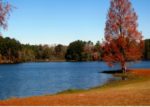
Writing descriptively scenery and surroundings comes more naturally to some writers than others. If you’re wondering why your novel is too short or moving too fast, that’s sometimes due to a lack of character development or to the plot itself. Sometimes, though, it’s caused by a lack of description, including descriptions of settings.
Why is it important to write about setting? Well, arguably, it’s not as important as it was one hundred years ago, when readers didn’t have ready access to images of other places through TV, movies, and the Internet. Contemporary readers can draw on many more visual memories of settings than readers of past centuries could. That’s why nineteenth-century novels tend to have lush, detailed visual descriptions.
But even in modern novels, which we expect to move more quickly, setting or a sense of place is important. It’s often neglected, but it can be a writer’s secret weapon. It can set the mood of a scene and help people get swept up in a story.
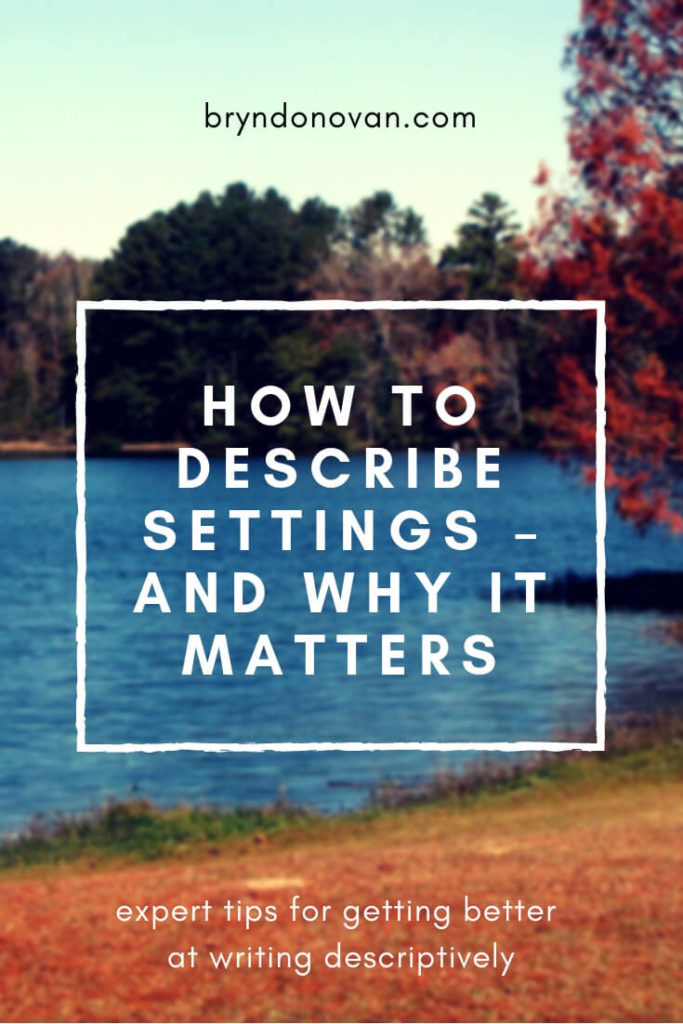
How to Describe Settings
Focus on just a few details.
Some writers balk at the idea of describing settings because they don’t know how to go on and on with descriptive writing without getting boring. Good news: you don’t have to go on and on. For a scene, just think of a few details that will convey the mood you’re looking for.
For instance, let’s say your character visits her grandma, who’s lived in the same tiny New York City apartment for fifty years. You might write about peeling paint on the walls, shelves full of framed photos and knickknacks, and the fact that the old-fashioned radiator heater makes the place too hot for your main character. There! Your reader already has a feel for the space.
Intersperse Details Here and There
This is another way to avoid going on and on. Instead of writing one big paragraph describing the setting, weave some of the details into the narrative. (You can do the same thing when you’re describing people’s looks .)
For instance, in the above example, your main character might notice the heat and the peeling paint on the walls right away. Then she might sit down on a floral sofa and notice the knickknacks and trinkets on the shelves. A little later, her conversation with her grandma might be interrupted by the banging from the radiator.
Start a Description Journal
I’ve written more about this here . This is a great way to make all kinds of descriptive writing in stories easier for you. It’ll give you material to draw from, and it’ll give you practice. Like anything else, the more you practice descriptive writing, the easier it’ll get.
Use Photographs and Videos
If you’re having trouble visualizing a scene in your head, do online searches of similar settings for inspiration. To describe the sunrise in the opening of my latest novel Sunrise Cabin , for instance, I used a photo of a sunrise that I’d taken myself (even though Paige’s sunrise was over the Colorado Rockies.)

Use Sounds, Smells, and Tactile Sensations
Most of us focus on visual description when we want to evoke the environment or surroundings, neglecting the other senses. While authors of novels, short stories, and other fiction can’t usually add a musical soundtrack to their story, the way a filmmaker can, they can still bring a lot of sound into their story to engage the readers even more.
Tactile sensations, or the way things feel — the cold wind against a character’s face, the soft mud under boots — can also evoke setting. And smells are especially powerful ways to trigger your reader’s emotions.
I have lists of suggestions for sounds and smells in my book Master Lists for Writers .
Remember, You Can Add Descriptions After Your First Draft
If descriptions of scenery slow you down when you’re first writing out your story, leave them until later. They’re easy to insert during revision!

Does description come easily to you, or do you have to work at it? Do you have suggestions for how to get better at describing settings, or at descriptive writing in general? I’m always learning a lot from the comments section, so please share! Thanks for reading, and happy writing!
Related Posts

Share this:
29 thoughts on “ how to describe settings ”.
I’ll share it!
Thanks so much, Alex! And thanks for reading the blog!
Description does stump me every once in a while. I use a lot of clothing magazines to help me describe clothing (I have a HUGE pile of them!), and rely on the internet for other things. I just wrote a scene in my book about kiddie tractor pulls and went to Youtube to watch a bunch of them to help me describe the setting. Even the parents shouting encouragement helped me write some dialogue. Sometimes I’ll find a scene in a book I’m reading and draw from that.
What a great idea! I would never have thought of using YouTube. Thanks.
YouTube is such a great resource! I found it incredibly useful when learning about military sabre fighting. Watching people moving and doing is a great way to get the descriptive juices flowing. 🙂
Hi, M. Lee. I LOVE that idea of using clothing magazines to describe clothing. Brilliant! And I’m so glad you mentioned youtube…it is one of my FAVORITE resources when I’m writing about a place I don’t know well. I love how it even encouraged dialogue. Great tips. Thank you so much for sharing!
Hello. Thank you for your writing help. I’m a first-time writer. If we’re limited to the number of words, how do we fit in all these descriptions? Thanks
Your post is too helpfull… I face problem when it comes to write description… I’ll try n practice it n maintain a seperate journal for it???
ZeeSiddiqui, I’m so glad you found it helpful! Hope the writing is going well. 🙂
Bryn, thank you so much for this post. This is something I struggle with. I like the suggestion of adding the details during the revision process. I just hope I don’t get so bogged down in corrections and replacements that I forget to pay attention to description.
Hey there! I’m so glad it was helpful. Thanks for reading!
Great post, Bryn. It’s always tough to know when to put on the brakes. I have a better idea now.
Hi, Frieda! So glad you liked it. Thanks for reading, and for commenting!
Great post Bryn. Descriptions, scene-setting can be difficult – trying to show more so than telling. I try to remember this while writing and realize myself how good it feels to get lost in the books that I read. I often feel like I would recognize a fictitious place I have read about if I were to come upon the setting in reality. Thanks for the suggestions. And if I haven’t already told you, I just love your book Master Lists for Writers.
Hi, Cheryl! I love what you’re saying about some fictitious places seeming so real. 🙂 And thanks for the kind words about Master Lists for Writers! I’m so glad it’s helpful.
Bryn, you’re so awesome! You do everything and anything to help us become better writers. Thank you so much!
Oh, thanks so much for the kind words — I really appreciate it!
Great points, Bryn. It’s amazing how prose has changed in the last hundred years…what modern readers like and dislike when it comes to description. In some ways, the information age has helped writers because we don’t need to go into the same depth that, per your example, nineteenth or early twentieth century writers did, especially for stories set in the modern world. With fantasy worlds, one has to strike a delicate balance…don’t bore the reader, but enough detail to get the imagination going. The internet is such a blessing, though…it’s so easy to get information about anything these days — from the way matches are made to the schematics of steam engines to technical names for all the parts of a flintlock weapon (all stuff I’ve researched for my story). I love M. Lee Scott’s suggestion about YouTube…that’s been crazy helpful, especially when I needed to get a feel for how a black powder weapon sounds and looks when it fires (where I live, there’s zero chance of witnessing it in real life, along with a few other things I’ve needed to know). Plus it’s quick! I have access to steam trains and have seen them in real life many times; when I need a refresher from the comfort of my office, a quick YouTube video will inspire me and get me going.
Description makes us more observant people. If I know I’ll be writing about a cup of coffee, I start paying really close attention when I have one…the steam swirling off the frothy cup, the warmth radiating through the mug, the scents of chocolate, steamed milk, and freshly ground beans (yeah, I like coffee…lol). This goes for anything…a glass of wine, a sunrise/sunset, the sound of the ocean… Description makes us pay attention to life, and that’s worth the effort in itself. 🙂
Lisa, I just got home from work, I need to go to bed, and you made me want coffee! Hahaha. It really is amazing — all the information we can access. Like a lot of writers, I love learning things, so I can sometimes get lost in the research as one thing leads me to another! But I love it!
Lol…I’ve definitely been lost in Research Land…totally understand what you mean. 🙂 The focus on coffee happened because I was gearing up for my first cup of the morning (enjoyed after the kids are gone to school…bliss…).
Great tips, Bryn. I always describe too much and slow down the pace, or describe too little and give no sense of setting. I need to find a middle ground ?. Thanks for sharing.
Hi, K.M.! Yeah, it is really hard to find that balance sometimes…I struggle with that, too. Thanks for commenting!
Recently I was asked to share memories of Grandma Hunt with her great grandson who never met her. I prepared myself by revisiting the scene in my heart and writing the description as I had felt it so many years ago. My descriptions included smells, physical action, a few images and a sense of space all informed by the character of that dear woman. When I posted it on Facebook, it was very well received. One of my friends said she felt she was right there. I guess it shows what can be done with description.
I have a tendency to write dialogue first. It comes easy for me. Then I go back and add setting, and all of the senses, filling in descriptions as I go. It’s kind of like an artist drawing a picture then going back and filling in the color. Your suggestion to start a journal is outstanding. I love the idea. I’m going to do that. I take a lot of photos, so if I have one I want to use later, I can print it and stick it in the journal. Thanks for your great somments Bryn. BTW: I’m having great fun with your characters in Sunrise Cabin.
Excellent post. To the point and covered the topic well. Thank you!
Thank you for this.
I love writing descriptions. It’s the easiest part of writing for me so I really liked your post – validation, I suppose! I often use Google Images by doing a simple search for terms in whatever category I’m trying to imagine, and always find a wealth of images to help me describe exactly what I need. Thanks so much.
This post is so helpful. Thank you. I’m fleshing out some of the settings in my WIP as we speak. So this is great. Thank you!
Hi, Erin! Oh good, I’m so glad it was well-timed and I hope the story is going well!
Leave a Reply Cancel reply
This site uses Akismet to reduce spam. Learn how your comment data is processed .
Discover more from BRYN DONOVAN
Subscribe now to keep reading and get access to the full archive.
Type your email…
Continue reading
Have a language expert improve your writing
Run a free plagiarism check in 10 minutes, generate accurate citations for free.
- Knowledge Base
- How to write a descriptive essay | Example & tips
How to Write a Descriptive Essay | Example & Tips
Published on July 30, 2020 by Jack Caulfield . Revised on August 14, 2023.
A descriptive essay gives a vivid, detailed description of something—generally a place or object, but possibly something more abstract like an emotion. This type of essay , like the narrative essay , is more creative than most academic writing .
Instantly correct all language mistakes in your text
Upload your document to correct all your mistakes in minutes

Table of contents
Descriptive essay topics, tips for writing descriptively, descriptive essay example, other interesting articles, frequently asked questions about descriptive essays.
When you are assigned a descriptive essay, you’ll normally be given a specific prompt or choice of prompts. They will often ask you to describe something from your own experience.
- Describe a place you love to spend time in.
- Describe an object that has sentimental value for you.
You might also be asked to describe something outside your own experience, in which case you’ll have to use your imagination.
- Describe the experience of a soldier in the trenches of World War I.
- Describe what it might be like to live on another planet.
Sometimes you’ll be asked to describe something more abstract, like an emotion.
If you’re not given a specific prompt, try to think of something you feel confident describing in detail. Think of objects and places you know well, that provoke specific feelings or sensations, and that you can describe in an interesting way.
Here's why students love Scribbr's proofreading services
Discover proofreading & editing
The key to writing an effective descriptive essay is to find ways of bringing your subject to life for the reader. You’re not limited to providing a literal description as you would be in more formal essay types.
Make use of figurative language, sensory details, and strong word choices to create a memorable description.
Use figurative language
Figurative language consists of devices like metaphor and simile that use words in non-literal ways to create a memorable effect. This is essential in a descriptive essay; it’s what gives your writing its creative edge and makes your description unique.
Take the following description of a park.
This tells us something about the place, but it’s a bit too literal and not likely to be memorable.
If we want to make the description more likely to stick in the reader’s mind, we can use some figurative language.
Here we have used a simile to compare the park to a face and the trees to facial hair. This is memorable because it’s not what the reader expects; it makes them look at the park from a different angle.
You don’t have to fill every sentence with figurative language, but using these devices in an original way at various points throughout your essay will keep the reader engaged and convey your unique perspective on your subject.
Use your senses
Another key aspect of descriptive writing is the use of sensory details. This means referring not only to what something looks like, but also to smell, sound, touch, and taste.
Obviously not all senses will apply to every subject, but it’s always a good idea to explore what’s interesting about your subject beyond just what it looks like.
Even when your subject is more abstract, you might find a way to incorporate the senses more metaphorically, as in this descriptive essay about fear.
Choose the right words
Writing descriptively involves choosing your words carefully. The use of effective adjectives is important, but so is your choice of adverbs , verbs , and even nouns.
It’s easy to end up using clichéd phrases—“cold as ice,” “free as a bird”—but try to reflect further and make more precise, original word choices. Clichés provide conventional ways of describing things, but they don’t tell the reader anything about your unique perspective on what you’re describing.
Try looking over your sentences to find places where a different word would convey your impression more precisely or vividly. Using a thesaurus can help you find alternative word choices.
- My cat runs across the garden quickly and jumps onto the fence to watch it from above.
- My cat crosses the garden nimbly and leaps onto the fence to survey it from above.
However, exercise care in your choices; don’t just look for the most impressive-looking synonym you can find for every word. Overuse of a thesaurus can result in ridiculous sentences like this one:
- My feline perambulates the allotment proficiently and capers atop the palisade to regard it from aloft.
An example of a short descriptive essay, written in response to the prompt “Describe a place you love to spend time in,” is shown below.
Hover over different parts of the text to see how a descriptive essay works.
On Sunday afternoons I like to spend my time in the garden behind my house. The garden is narrow but long, a corridor of green extending from the back of the house, and I sit on a lawn chair at the far end to read and relax. I am in my small peaceful paradise: the shade of the tree, the feel of the grass on my feet, the gentle activity of the fish in the pond beside me.
My cat crosses the garden nimbly and leaps onto the fence to survey it from above. From his perch he can watch over his little kingdom and keep an eye on the neighbours. He does this until the barking of next door’s dog scares him from his post and he bolts for the cat flap to govern from the safety of the kitchen.
With that, I am left alone with the fish, whose whole world is the pond by my feet. The fish explore the pond every day as if for the first time, prodding and inspecting every stone. I sometimes feel the same about sitting here in the garden; I know the place better than anyone, but whenever I return I still feel compelled to pay attention to all its details and novelties—a new bird perched in the tree, the growth of the grass, and the movement of the insects it shelters…
Sitting out in the garden, I feel serene. I feel at home. And yet I always feel there is more to discover. The bounds of my garden may be small, but there is a whole world contained within it, and it is one I will never get tired of inhabiting.
If you want to know more about AI tools , college essays , or fallacies make sure to check out some of our other articles with explanations and examples or go directly to our tools!
- Ad hominem fallacy
- Post hoc fallacy
- Appeal to authority fallacy
- False cause fallacy
- Sunk cost fallacy
College essays
- Choosing Essay Topic
- Write a College Essay
- Write a Diversity Essay
- College Essay Format & Structure
- Comparing and Contrasting in an Essay
(AI) Tools
- Grammar Checker
- Paraphrasing Tool
- Text Summarizer
- AI Detector
- Plagiarism Checker
- Citation Generator
Receive feedback on language, structure, and formatting
Professional editors proofread and edit your paper by focusing on:
- Academic style
- Vague sentences
- Style consistency
See an example

The key difference is that a narrative essay is designed to tell a complete story, while a descriptive essay is meant to convey an intense description of a particular place, object, or concept.
Narrative and descriptive essays both allow you to write more personally and creatively than other kinds of essays , and similar writing skills can apply to both.
If you’re not given a specific prompt for your descriptive essay , think about places and objects you know well, that you can think of interesting ways to describe, or that have strong personal significance for you.
The best kind of object for a descriptive essay is one specific enough that you can describe its particular features in detail—don’t choose something too vague or general.
Cite this Scribbr article
If you want to cite this source, you can copy and paste the citation or click the “Cite this Scribbr article” button to automatically add the citation to our free Citation Generator.
Caulfield, J. (2023, August 14). How to Write a Descriptive Essay | Example & Tips. Scribbr. Retrieved April 2, 2024, from https://www.scribbr.com/academic-essay/descriptive-essay/
Is this article helpful?

Jack Caulfield
Other students also liked, how to write a narrative essay | example & tips, how to write a literary analysis essay | a step-by-step guide, how to write an expository essay, unlimited academic ai-proofreading.
✔ Document error-free in 5minutes ✔ Unlimited document corrections ✔ Specialized in correcting academic texts
Descriptive Writing Examples: A Guide to Mastering the Art of Description

Imagine an article so teeming with life that it seems sentient.
As you consume its words, it seizes your attention and transports you to a world where scaly dragons slice through the sky as sharply as the knight’s blade that threatens their existence.
Okay, this post may not be that invigorating, but let’s see how we can bring our words to life through descriptive writing….
The Draw of Descriptive Writing
Descriptive writing is a powerful tool that enables you to create vivid images in your reader’s mind.
When you use figurative language and sensory details, it creates an immersive experience for your readers, drawing them into your narrative more fully.
The use of metaphors, for example, helps you illustrate similarities in ways that are easily understood:
“Her eyes were radiant stars in the night sky.”
Beyond using metapors, descriptive writing highlights emotion, describing it in fine detail.
You can evoke emotion through the reactions of your characters and the atmosphere you create.
Instead of stating that a character is sad, describe their trembling lip, downcast eyes, or the heavy weight on their shoulders.
Incorporate figurative language, such as similes and personification, to convey more depth in your descriptions.
Similes make explicit comparisons:
“The leaves rustled like whispers in the night.”
Personification attributes human characteristics to non-human things:
“The wind howled in frustration.”
Engage your reader’s senses by describing not only how things look but also how they sound, feel, taste, and smell.
For instance:
- describe the warmth of a crackling fireplace,
- the aroma of freshly baked bread,
- or the sound of rain beating against the window.
Finally, include specific sensory details so that your reader can easily envision what you’re trying to describe. Instead of simply stating that a room was messy, describe the piles of clothes on the floor, the papers strewn about, and the half-empty coffee mugs on the cluttered desk.
By combining these elements in your descriptive writing, you’ll create a rich and engaging experience that will captivate your readers and leave lasting impressions.
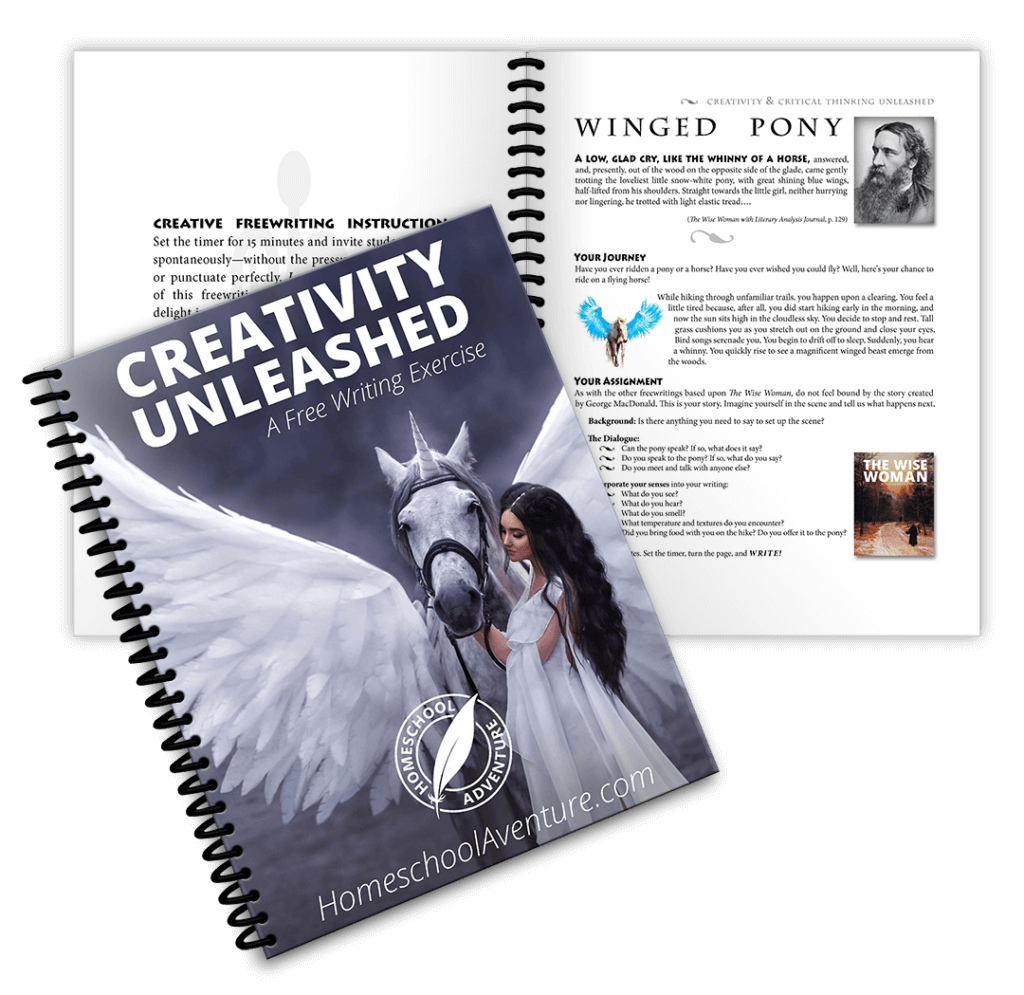
Get a free writing exercise (includes prompts)!
Key elements of descriptive writing.
First, provide a clear setting . Inform your readers of the location and time period of your scene.
Whether you’re describing a busy city street or a serene forest, give a clear context that allows your readers to immerse themselves within the locale.
Make sure to address the surroundings and any relevant objects that contribute to the setting.
Next, organize your description in a logical order . Guide your reader through the scene by providing a clear sequencing of events, objects, or characters.
This can be done chronologically, spatially, or in order of importance to the story.
Having a clear flow of information ensures that your reader can easily follow the narrative—without getting lost in the details.
Lastly, it’s important to be clear and concise throughout the writing process. Being detailed doesn’t mean being overly wordy.
Efficiently and effectively convey your message to the reader.
Remember to keep the focus on the scene, setting, and characters, and avoid inserting unnecessary opinions or judgments.
A consistent and informative tone allows your reader to fully appreciate and understand your writing.
The Role of Language Selection
When writing descriptive paragraphs , the use of various linguistic devices helps paint a vivid picture in the reader’s mind.
Let’s explore how some of these devices can enhance your writing.
Adjectives enrich your writing by adding details and depth to nouns. Be intentional with the choice of your adjectives. Opt for compelling descriptors to create a lasting impression.
Verdant has more pizazz than green , don’t you think?
Verbs and adverbs give life and movement to your writing.
Avoid repetition, and be precise with your verb or adverb word choice. Instead of saying “walked slowly,” you could use “sauntered” or “strolled.”
Include specific details that help your reader perceive a scene exactly as you do. It might be the texture of a fabric, a particular smell, or the way light reflects off a surface.
Opt for expressive terms, and utilize devices such as metaphors and personification to create strong mental images.
Lastly, onomatopoeia is a useful tool in descriptive writing, involving words that represent sounds, such as “buzz,” “sizzle,” or “whisper.”
They help aurally immerse your readers in the scene and make the experience more engaging.
Remember, it’s essential to balance these language features to effectively maintain your reader’s interest.
3 Examples of Descriptive Writing
1. descriptive writing sample about a place.
Imagine you’re walking through an enchanting forest. The sunlight filters through the dense canopy, casting dappled shadows on the soft, mossy ground.
Surrounding you, tall trees stretch towards the sky, their bark rough and gnarled, providing a home for scurrying beetles. A gentle breeze brings the scent of fresh pine and damp earth, stirring your senses and enveloping you in the forest’s calming embrace.
As you continue further, a babbling brook emerges, its crystal-clear water reflecting the sky above. The tranquil sound of the water brings a sense of serenity to the enchanted forest.
2. Descriptive Writing Sample About a Person
Consider a grandmother you know—someone whose face has been etched with the wisdom of a long life. Her once-dark hair—now a silver cascade—frames her face, showcasing the crinkles around her worn, yet joy-filled eyes.
Her hands, strong and calloused from decades of hard work, are nevertheless gentle, cradling a grandchild or cupping the cheek of a loved one.
When she speaks, her voice is like the rustling of leaves, soft yet strong, exuding age, wisdom, and a hint of mischievous humor.
Her smile is a treasure that spreads warmth to everyone she encounters.
3. Descriptive Writing Sample About Emotion
Imagine the sensation of excitement—that fluttering in your stomach as your heart races. It’s as if electricity buzzes beneath your skin.
Your hands tremble slightly as your breathing intensifies. Your thoughts race, jumping from one subject to another as a smile spreads across your face.
It’s a contagious feeling that spreads like a wave, refreshing those around you.
Did these short samples help you better understand descriptive writing? Now it’s your turn! Practice with this free creative writing exercise:
If you have an elementary-aged student, try these creative writing topics to get him or her started.
Frequently Asked Questions
How can i improve my descriptive writing skills.
To improve your descriptive writing skills, practice is essential. Write regularly, describing various objects, settings, and people.
Also, study examples of descriptive writing to analyze how other authors create vivid imagery. Experiment with various literary devices, such as similes, metaphors, and personification. Remember, it’s okay—even highly recommended—to revise your work and refine your descriptions.
What are some techniques used in descriptive writing?
Some common techniques used in descriptive writing include:
- Imagery : Use vivid language to create mental images that help readers visualize the subject.
- Sensory details : Engage the reader’s senses (sight, sound, smell, taste, touch) by providing specific details.
- Similes and metaphors : These comparisons help readers understand complex subjects by comparing them to familiar, simpler objects.
- Personification : Bring stories to life by giving human characteristics to non-human objects.
- Precise language : Use clear and accurate words to describe the subject effectively.
- Varied sentence structure : Mix short and long sentences to maintain the reader’s interest and provide a natural flow to your writing.
How does descriptive writing differ between grade levels?
Descriptive writing expectations change as students progress through grade levels:
- Elementary grades : At younger ages, students are encouraged to use simple, familiar language to describe objects, scenes, and characters. They should focus on basic descriptive techniques such as adjectives and sensory details. Consider picture-based writing prompts for this age group.
- Middle grades : As students advance, they begin to incorporate more complex language, literary devices, and varied sentence structures. They also start to tailor their descriptions to their audience and purpose.
- High school : High school students refine their descriptive writing skills by using more sophisticated vocabulary, creating nuanced images, and developing their personal writing style. They are expected to demonstrate a mastery of descriptive techniques and employ them effectively across various writing genres.
About The Author

Jordan Mitchell
Definition of Setting
Setting is a literary device that allows the writer of a narrative to establish the time, location, and environment in which it takes place. This is an important element in a story , as the setting indicates to the reader when and where the action takes place. As a result, the setting of a narrative or story helps the reader picture clear and relevant details. In addition, setting enhances the development of a story’s plot and characters by providing a distinct background.
In literature, setting can be specific or general in terms of geographical location and historical time period. A specific, or integral, setting refers to an exact location and time period established by the writer. This information can be directly imparted to the reader or implied in the narrative. A backdrop setting is more general, vague, or nondescript, which makes the story more universal for readers. The setting of a literary work may also be a fictional location or world, a future time and place, or it may be unknown.
For example, the fairy tale “Cinderella” traditionally features a backdrop setting, such as long ago in a faraway kingdom. However, a modern interpretation of “Cinderella” might feature an integral setting such as New York City to enhance aspects of the story’s plot, characters, and theme .
Examples of the Importance of Setting as a Literary Device
Setting is an important literary device, as its purpose is to create a “world” in which a story takes place. Setting can also influence the plot of a story and the actions of the characters. Here are some examples of the importance of setting as a literary device:
- helps establish the mood and/or tone of a story
- provides context for other story elements such as plot, characters, and theme
- reinforces the narrative by providing structure and function in the story
- enhances individual scenes within a story’s plot
Occasionally, the “presence” of a story’s setting, in terms of a time period, geographic location, or environment, can feel to the reader like an additional character . This can make for clever use of this literary device in portraying a particular time and/or place with a personality all on its own in a story.
Common Examples of Cities Frequently Used as Setting
Certain cities are frequently used as settings in literary works. By setting a narrative or story in a well-known city, the writer can be relatively certain that the reader will have a general sense and understanding of the locale, including geographical characteristics, landmarks, culture, etc. This can alleviate some burdens for the writer in terms of description and allow for the focus to remain on the story’s plot and characters.
Here are some common examples of cities that are frequently used as settings in literature:
- New York City
- Los Angeles
- New Orleans
Common Examples of Historical Time Periods Frequently Used as Setting
Certain historical time periods are frequently used as settings in literary works as well. By setting a narrative or story in a well-known era, the writer can also be relatively certain that the reader will have a general sense and understanding of the history, events, historical figures, etc. This can additionally alleviate some burdens for the writer in terms of description and allow for the focus to remain on the story’s plot and characters.
Here are some common examples of historical time periods (not in chronological order) that are frequently used as settings in literature:
- Ancient Greece
- Industrial Revolution
- Middle Ages
- Renaissance
- Age of Exploration
- Classical Era
- Turn of the century
- Roaring ’20s
- World War I
- Westward Expansion
- World War II
- Victorian Age
- Contemporary
Common Examples of Environments Frequently Used as Setting
Certain types of environments are frequently used as settings in literary works in addition to specific geographical locations. By setting a narrative or story in a well-known environment, the writer can be relatively certain that the reader will have a general sense and understanding of that environment’s characteristics, such as terrain, climate, culture, etc. This can alleviate some burdens for the writer as well in terms of description and allow for the focus to remain on the story’s plot and characters.
Here are some common examples of environments that are frequently used as settings in literature:
- outer space
- rural/farmland
- countryside
- Southern plantation
- ship at sea
How to Understand and Describe Setting in Writing
The idea of understanding the setting depends on the storyline, characters, and events. These three are important elements that define a setting. It is because every setting has some specific qualities where certain people live and interact. Also, setting impacts them and their actions which define their lives. Some other less significant elements of setting are landscape, type of land, climate, weather, social conventions, and cultural surroundings. When writers and readers understand all these elements, it becomes easy for them to write about setting and describe it in words.
Backdrop and Integral Setting
Although the backdrop and integral setting sound the same, they are different. An integral setting is a specific place associated with some specific characters, having a specific role to play in the events of the story, a backdrop setting is general. It is could be any town given in a story without any specific quality and feature. An integral setting has all the necessary elements that define a setting, a backdrop setting has only common elements given through generic names.
Five Elements of Setting or Aspects of Setting
A setting within a piece of literature must have five elements or aspects. Although there are several other aspects that are necessary, the following five are fundamental elements of a setting. The first one is locale which means the country or the region. The second is the time which also includes the timing which means day, night , or month of the year. The third is climate, the fourth is geographical features and the fifth is population, society, and culture.
Fictional and Non-Fictional Settings
A fictional setting is a type of setting that exists only in imagination and there is no connection of this setting with reality. The non-fictional setting is a type of setting that exists in reality. For example, Eldorado does not exist nor do some cities mentioned in various novels. However, Paris and London do exist and they are real cities mentioned in several novels and short stories as the settings of the storylines. This difference, however, evaporates when some real place is mentioned in connection with fictional characters.
Setting and Exposition
As the term shows, exposition means detailed descriptions of the characters, settings, and the storyline in the beginning of the novels or short stories, setting is part of the exposition. The exposition just explains settings, giving its details. It also shows how events are going to unfold. However, the setting only shows characters having certain relationships with the land, geographical location, social fabric, and flora and fauna.
Difference between Temporal and Spatial Setting
Spatial refers to space that means the place, its geography, its location, its social fabric, its flora, and fauna, etc. Temporal, on the other hand, refers to a time that means the specific time of the year or the month, or the day when the event in question takes place. Whereas spatial setting shows the location and the place, the temporal setting shows when the events have taken place in that specific place. Both settings are used interactively and in conjunction with each other. No one can be used interchangeably or exclusively.
Examples of Setting in Literature
In literature, setting provides the reader an image and idea of time and place that frames the action of a story and can reveal aspects of its characters. By using the setting as a literary device, the writer can help the reader visualize the action of the work, which adds credibility and authenticity to the story. In addition, a setting can create and sustain the illusion of imaginary places and worlds in fiction as well as time periods in the future or prehistoric past. Without an indication of the setting, a story would lack significant context for the reader, potentially reducing their enjoyment and/or understanding of the work.
Here are some examples of setting in well-known works of literature:
Example 1: Harrison Bergeron by Kurt Vonnegut, Jr.
THE YEAR WAS 2081, and everybody was finally equal. They weren’t only equal before God and the law. They were equal every which way. Nobody was smarter than anybody else. Nobody was better looking than anybody else. Nobody was stronger or quicker than anybody else. All this equality was due to the 211th, 212th, and 213th Amendments to the Constitution, and to the unceasing vigilance of agents of the United States Handicapper General.
In Vonnegut’s short story , the narrator reveals the setting at the outset. This establishes a significant amount of information for the reader before the action of the story even begins. The narrator stipulates the year, which indicates to the reader that the time period of the story is in the future but not terribly distant. In addition, the story is clearly set in the United States as indicated by the mention of the constitutional amendments.
As well as directly establishing the time and location of the story, Vonnegut also utilizes setting as a literary device to impart to the reader a sense of the story’s environment. In this case, there is a strong refrain of mandated equality in terms of the physical and intellectual characteristics of this future population that is further enforced by a national agency. As a result, the reader is able to instantly picture the background in which the events of the story and the movement of the characters will take place.
Example 2: As I Lay Dying by William Faulkner
That’s the one trouble with this country: everything, weather, all, hangs on too long. Like our rivers, our land: opaque, slow, violent; shaping and creating the life of man in its implacable and brooding image.
Faulkner created his own fictional county in Mississippi, Yoknapatawpha County, in which to set nearly all of his novels and numerous short stories. Yoknapatawpha was inspired by and based on Lafayette County in Oxford, Mississippi, with which Faulkner was familiar. Faulkner himself considered Yoknapatawpha County as apocryphal in the sense that many of his readers believe it to be a real place. In fact, his novel Absalom, Absalom! includes a map of the fictional country that was drawn by Faulkner.
By creating this realistic yet fictional Mississippi county, Faulkner was able to incorporate several aspects of this setting across many of his works. In this passage from his novel As I Lay Dying , for example, the atmosphere of Yoknapatawpha is as much a presence as the characters, and Faulkner underscores the reciprocal influence and shaping of the novel’s setting and characters. In addition, by using Yoknapatawpha to set so many of his literary works, Faulkner’s readers find familiarity with and understanding of the physical location and environment in which the narrative takes place. This allows readers to focus on the action and characters of the story.
Example 3: The Rime of the Ancient Mariner by Samuel Taylor Coleridge
And now there came both mist and snow , And it grew wondrous cold: And ice, mast-high, came floating by, As green as emerald. And through the drifts the snowy clifts Did send a dismal sheen: Nor shapes of men nor beasts we ken— The ice was all between. The ice was here, the ice was there, The ice was all around: It cracked and growled, and roared and howled, Like noises in a swound!
In Coleridge’s poem , he juxtaposes two very different and distinct settings. At the outset of the poem, the setting is a wedding in which the guests are joyful, merrily dancing, eating, and drinking. This celebratory environment is in stark contrast to the setting of the mariner’s story within the poem, which he relays to a wedding guest outside the venue.
This passage of the poem indicates the setting of the Mariner’s tale, as the boat travels to the icy Antarctic. The oppressive presence and noise of the ice create a barren environment that is cold to the existence of living things. This emphasis on the environmental setting in Coleridge’s poem not only draws the reader away from the warmth and life-affirming nature of the wedding, but it also reflects for the reader the danger and isolation faced by sailors at sea. In fact, the reader becomes part of the setting described by the mariner just as the wedding guest becomes part of the mariner’s story through the poet’s description of the setting and events. This allows for a stronger connection between the poem and the reader.
Synonyms of Setting
The distant synonyms for setting are as follows: position, situation, background, backdrop, milieu, environs, habitat, place, location, spot, locale, context, frame, area, neighborhood, locus, district, and region.
Related posts:
- Do Not Go Gentle into That Good Night
- Once More unto the Breach
- Hamlet Act-I, Scene-I Study Guide
Post navigation
- Literary Terms
- Definition & Examples
- When & How to Use Setting
I. What is Setting?
Setting is the time and place (or when and where) of the story. It’s a literary element of literature used in novels, short stories, plays, films, etc., and usually introduced during the exposition (beginning) of the story, along with the characters . The setting may also include the environment of the story, which can be made up of the physical location, climate, weather, or social and cultural surroundings.
There are various ways that time and place indicate setting. Time can cover many areas, such as the character’s time of life, the time of day, time of year, time period such as the past, present, or future, etc. Place also covers a lot of areas, such as a certain building, room in a building, country, city, beach, in a mode of transport such as a car, bus, boat, indoors or out, etc. The setting of a story can change throughout the plot. The environment includes geographical location such as beach or mountains, the climate and weather, and the social or cultural aspects such as a school, theatre, meeting, club, etc.
II. Examples of Setting
A simple example to understand setting is the Disney movie “Cinderella.” The setting starts out as
Time: Cinderella as a young girl, long ago in the past
Place: Cinderella’s home in a kingdom far away
After her father dies, the time aspect of setting changes, skipping roughly ten years into the future. Understanding this change in time helps in keeping up with the story.
Time: Cinderella as a young woman, long ago in the past
Place: Cinderella’s home in a kingdom, in her bedroom and in the kitchen
Read this example below to see how setting is written into a story.
As the sun set in the evening sky, Malcolm slowly turned and walked toward his home. All was silent and still. Through the window, he could see his older brother James watching a football game on the TV. James was home from his first year of college in the city. It was lonely at times, but Malcolm felt it was rather nice to not be in James’ shadow during his senior year of high school.
Time: evening, senior year of high school, and modern times (they have a TV)
Place: Malcolm’s home, and possibly the suburbs or country (his brother has gone to the city for school).
III. Types of Setting
There are two types of setting, each having its own purpose.
a. Backdrop setting
Have you ever read a story, but found it difficult to figure out what time period in which the story was written or where it is? The story probably had a backdrop setting. The story is timeless and can happen at any point in history or anywhere. The focus is on the lesson or message being delivered. Many fairy tales and children’s stories have backdrop settings. “Winnie the Pooh” would be an example. Since the lessons that the characters learn is the point rather than the time period, it’s hard to tack a “past, present, or future” on the time aspect of the setting. It could also be any town or country, which means children anywhere can relate to it.
b. Integral setting
With an integral setting (integral means to be a part of or important to), the time and place are important to the story. For example, a story dealing with a historical setting will have a direct impact on the plot. A story that happens in the 1800s will not have technology, so the characters will have to write a letter, ride a horse or take a carriage to visit each other; they cannot travel long distances in one day as we do now with cars, buses, and planes. This will have a direct impact on the events of the story, especially if there is distance involved.
IV. The Importance of Setting
Setting gives context to the characters’ actions in a story line. It can also create the mood (how the reader or viewer feels). It’s easier to understand why the characters in the story are doing what they’re doing when we know where the they are. The time of day, time of year, and ages of the characters will also affect how they act and what they say.
All forms of literature will have some form of setting; even backdrop settings have an age range of the characters, which is part of time, and a location, either indoors or out, for example. Without a setting, readers and viewers cannot follow a story plot.
V. Examples of Setting in Literature
All good literature uses setting. No story can exist without an element of time or place. Here are some popular examples.
Elie Wiesel wrote “Night” in the 1950s, but his biography has been read by millions through the decades and is still a popular book in schools. It’s the true and tragic account of Wiesel’s Jewish family during the Holocaust of World War II.
AND THEN, one day all foreign Jews were expelled from Sighet. And Moishe the Beadle was a foreigner. Crammed into cattle cars by the Hungarian police, they cried silently. Standing on the station platform, we too were crying. The train disappeared over the horizon; all that was left was thick, dirty smoke. Behind me, someone said, sighing, ‘What do you expect? That’s w a r… (Wiesel 1958).
In this passage, we have the name of the town and a location within the town (place). We know that it’s a war (time). Since we know Wiesel survived World War II, we know it must be in the 1940s (time). The description of human beings “crammed into cattle cars” creates a mood of sympathy that such a place could be used for people.
This next example is from J. K. Rowling’s book “Harry Potter and the Chamber of Secrets.” Rowling’s series of Harry Potter books are popular with young adults and have been made into films.
October arrived, spreading a damp chill over the grounds and into the castle. Madam Pomfrey, the nurse, was kept busy by a sudden spate of colds among the staff and students. Her Pepperup potion worked instantly, though it left the drinker smoking at the ears for several hours afterward. Ginny Weasley, who had been looking pale, was bullied into taking some by Percy. The steam pouring from under her vivid hair gave the impression that her whole head was on fire (Rowling 1999).
This excerpt sets a gloomy mood with its setting, particularly with the words “damp chill.” It’s October and the characters are students, so we assume young (time). They are in a school dormitory, which is a castle (place). Since the season is fall, we know that the students are getting sick because of the cold. The idea that they are using a “potion” hints that the time period is long ago in the past or some fantasy time period.
VI. Examples of Setting in Pop Culture
One area of pop culture that relies heavily on strong settings is the video game industry. The YouTube video below illustrates the importance of setting in games. As computer technology has improved over the years, video games have progressed from boring, simple games to intense and complex gaming experiences all due to the use of setting. Video games now have realistic backgrounds, whereas the first video games (as far back as the 1950s) had blank or static (unchanging) backgrounds. There are popular games designed in all time periods – past, present, and future – and in all areas of the world, including underwater and in outer space, as well as fantasy worlds.

A second example of setting within pop culture is Game of Thrones by George R. R. Martin. This is a novel that’s been made into a successful series. Setting is a large basis of the story. The video below shows intro to the series, which starts out with a map of the kingdom, an indication that setting will play an important part in the story.

To help readers understand the place of setting, Martin has a map in the front of the book so that they can see the location of plot events as the story unfolds. Viewers watching the series are able to see the settings change by following the scenes. Some settings are in castles, others in war camps. These different places of the setting will affect how the characters act. Characters in the castle are able to move about freely, may have servants doing things for them (or they are the servants doing for others), and can dress for comfort. However, the characters in the war camps have to move carefully, do things for themselves, and must dress for safety from instruments of war, such as swords. It’s clear that time and place move the plot along.
This video illustrates how both time and place of setting must be clear in understanding the story. The aliens try to find the setting in a story, but forgot one aspect.

VII. Related Terms
Environment.
Environment is the physical location. It includes conditions such as the geographical properties (water, sand, mountains, etc.), the cultural and social settings (school, place of worship, community, business, museum, theatre, etc.), and weather or climate (storm, rain, sunshine, desert, mountain range, plains, etc.). Most times, environment plays a large part in the setting of any story.
VIII. Conclusion
Setting is an important literary device that is often taken for granted or easily misunderstood. Creating clear depictions of time and place in a story creates mood and moves the story along. Without setting, the plot line would be confusing and boring. A key element of a strong setting is using descriptive details, pulling on the reader’s senses.
List of Terms
- Alliteration
- Amplification
- Anachronism
- Anthropomorphism
- Antonomasia
- APA Citation
- Aposiopesis
- Autobiography
- Bildungsroman
- Characterization
- Circumlocution
- Cliffhanger
- Comic Relief
- Connotation
- Deus ex machina
- Deuteragonist
- Doppelganger
- Double Entendre
- Dramatic irony
- Equivocation
- Extended Metaphor
- Figures of Speech
- Flash-forward
- Foreshadowing
- Intertextuality
- Juxtaposition
- Literary Device
- Malapropism
- Onomatopoeia
- Parallelism
- Pathetic Fallacy
- Personification
- Point of View
- Polysyndeton
- Protagonist
- Red Herring
- Rhetorical Device
- Rhetorical Question
- Science Fiction
- Self-Fulfilling Prophecy
- Synesthesia
- Turning Point
- Understatement
- Urban Legend
- Verisimilitude
- Essay Guide
- Cite This Website
- Conjunctions
- Prepositions
Describing Words for Settings: Examples & Tips
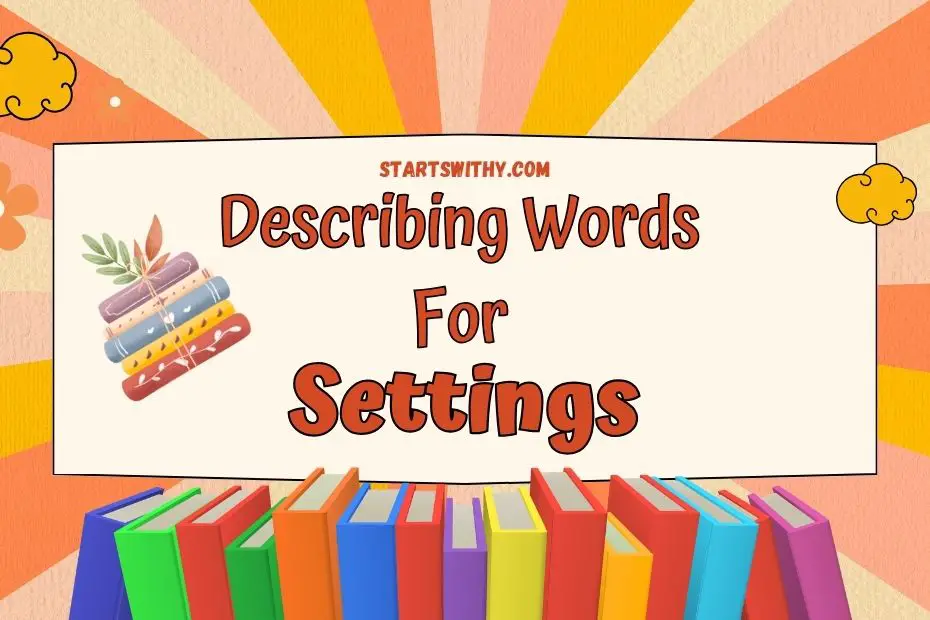
When it comes to creating vivid and immersive scenes in writing, the power of descriptive adjectives cannot be underestimated. Whether you’re crafting a story, painting a picture with words, or simply trying to set the mood, the right adjectives can bring any setting to life. In this article, I’ll be sharing a collection of adjectives that will help you describe settings in a way that captivates your readers and transports them to another world. From serene and tranquil landscapes to bustling and vibrant cityscapes, get ready to expand your descriptive vocabulary with these examples of adjectives for settings.
Imagine a lush, verdant forest where sunlight filters through the canopy, casting dappled shadows on the moss-covered ground. Or picture yourself strolling along a pristine, sandy beach, feeling the warm grains of sand between your toes as the gentle ocean breeze caresses your skin. These are just a few examples of the countless settings that can be brought to life with the right choice of adjectives. Whether you’re a writer, a poet, or simply someone who loves to paint pictures with words, this article will equip you with a range of descriptive adjectives to enhance your storytelling and create memorable settings that will leave your readers wanting more. So let’s dive in and explore the world of adjectives for settings together.
Table of Contents
How to Describe settings? – Different Scenarios
When it comes to storytelling, creating vivid and immersive settings is essential. Descriptive adjectives play a crucial role in bringing these settings to life and captivating readers. In this section, I’ll provide you with some valuable tips on how to describe different scenarios to enhance your storytelling skills. So, let’s dive in!
- Be Observant : To effectively describe a setting, you need to observe your surroundings and pay attention to the details. Take note of the sights, sounds, smells, and textures that make up the environment. This will help you create a rich and realistic description that engages your readers’ senses.
- Choose Specific Adjectives : Specific adjectives add depth and specificity to your descriptions. Instead of simply saying “the sky was blue,” try to be more precise. For example, you could say, “the sky was a vibrant sapphire blue, dotted with puffy white clouds.” This level of detail helps set the scene and paints a more vivid picture in the reader’s mind.
- Use Comparisons and Analogies : Comparisons and analogies can be powerful tools in describing settings. By comparing elements of the setting to something familiar, you can evoke a strong visual image. For instance, you could describe a bustling city street as “a river of people flowing through a concrete jungle.”
- Utilize Emotionally-Charged Adjectives : Don’t forget to tap into the power of emotions. Use adjectives that evoke emotions to create a deeper connection between the setting and the reader. For example, instead of just describing a beach as “sunny and sandy,” you could use adjectives like “serene,” “tranquil,” or “invigorating” to convey a specific atmosphere.
- Consider the Time of Day : The time of day can significantly influence the atmosphere of a setting. Whether it’s the golden hues of a sunset or the eerie shadows of a moonlit night, describing the lighting and overall ambiance can greatly enhance your storytelling.
- Incorporate Sensory Language : Engage your readers’ senses by incorporating sensory language into your descriptions. Describing the smells, sounds, and textures of a setting can transport your readers into the scene. For instance, you could describe a rainy day as “the earthy scent of wet soil, the rhythmic patter of raindrops on the roof, and the chill of dampness in the air.”
Describing Words for settings in English
As a writer, I know that using the right adjectives is crucial in creating vivid and immersive settings in storytelling. Whether you are describing a peaceful garden, a bustling city street, or a serene beach, choosing the perfect words can transport your readers to a whole new world. In this section, I will share some examples of descriptive words that you can use to bring your settings to life.
Outdoor Settings
When describing outdoor settings, it’s important to consider the elements and overall ambiance. Here are some adjectives to help you paint a picture:
- Lush : The vibrant green trees and abundance of colorful flowers create a lush and enchanting garden.
- Breathtaking : From the top of the mountain, I gazed at the breathtaking view of endless rolling hills.
- Serenity : The tranquil lake exuded a sense of serenity, with its calm waters and peaceful surroundings.
Urban Settings
City streets can be vibrant, chaotic, and full of energy. Here are some words that capture the essence of urban settings:
- Hustling : The streets were filled with hustling commuters, rushing to catch their trains.
- Glimmering : As the sun set, the city’s skyscrapers transformed into a glimmering skyline.
- Vibrant : The lively market was a vibrant display of colors, sounds, and smells.
Natural Settings
Nature offers a wide array of breathtaking settings. Here are some adjectives to describe the beauty of the great outdoors:
- Majestic : The towering mountains stood in all their majestic glory, untouched by human hands.
- Tranquil : The calm, still lake provided a tranquil setting for a leisurely boat ride.
- Idyllic : The idyllic meadow, filled with wildflowers and chirping birds, was a perfect spot for a picnic.
Remember, these are just a few examples to get your creative juices flowing. With the right adjectives, you can transport your readers into the worlds you create. Don’t be afraid to experiment and find the perfect words that truly capture the essence of your settings.
Now that you have a grasp on using descriptive words for settings, let’s move on to another important aspect of storytelling: using comparisons and analogies.
Adjectives for settings
As a writer, I understand the importance of descriptive adjectives in creating vivid and immersive settings in storytelling. In this section, I will explore the use of adjectives to bring settings to life. Let’s dive in!
Positive Adjectives for Settings with 12 Example Sentences
When painting a picture of a setting, positive adjectives can make all the difference in capturing the mood and atmosphere. Here are twelve examples of positive adjectives and how they can enhance a setting:
These adjectives help transport readers into the worlds being created, allowing them to vividly imagine the settings and feel a sense of immersion.
Negative Adjectives for Settings with 5 Example Sentences
To create contrast and evoke certain emotions, negative adjectives can be just as effective in describing settings. Here are five examples of negative adjectives used to convey a different mood or atmosphere:
These negative adjectives help set the tone and create a sense of tension or unease within the settings, captivating readers in a different way.
Keep in mind that the choice of adjectives depends on the desired effect and context of the story. Experimenting with different adjectives can add depth and richness to your storytelling skills.
Synonyms and Antonyms with Example Sentences
Synonyms for settings.
When it comes to describing different settings, there are many synonyms that can help create a vivid and immersive experience for readers. Here are some examples of synonyms for settings along with their example sentences:
Using these synonyms can help add depth and richness to your storytelling, allowing readers to fully immerse themselves in the world you create. Experimenting with different synonyms for settings can help you find the perfect word that sets the desired tone and atmosphere.
Antonyms for settings
While synonyms can enrich your descriptions, antonyms can provide contrast and variety in your storytelling. Here are some examples of antonyms for settings along with their example sentences:
By using antonyms for settings, you can create a dynamic narrative that keeps readers engaged and intrigued. The juxtaposition of contrasting settings can add depth and complexity to your storytelling, making it more memorable for your audience.
Remember, choosing the right adjectives, synonyms, and antonyms for settings is crucial in creating a captivating story. By carefully selecting the words you use, you can transport your readers into the worlds you create and set the desired tone and atmosphere without relying on a conclusion paragraph or sentence.
In this article, we have explored the significance of descriptive adjectives in crafting captivating settings for storytelling. By using synonyms and antonyms, we can create a world that is not only visually stimulating but also emotionally engaging. From location to atmosphere, we have examined various types of settings and provided examples of descriptive words that can bring them to life.
By carefully selecting the right adjectives, synonyms, and antonyms, we can set the tone and atmosphere of our stories, allowing readers to fully immerse themselves in the narrative. Whether it’s an urban environment or a peaceful countryside, the power of descriptive language lies in its ability to transport readers to different worlds.
Remember, the key to creating vivid and immersive settings is to choose words that evoke the desired emotions and sensations. So, next time you embark on a storytelling journey, don’t forget to harness the power of descriptive adjectives to paint a picture that captivates your audience and leaves a lasting impression.
Related Posts
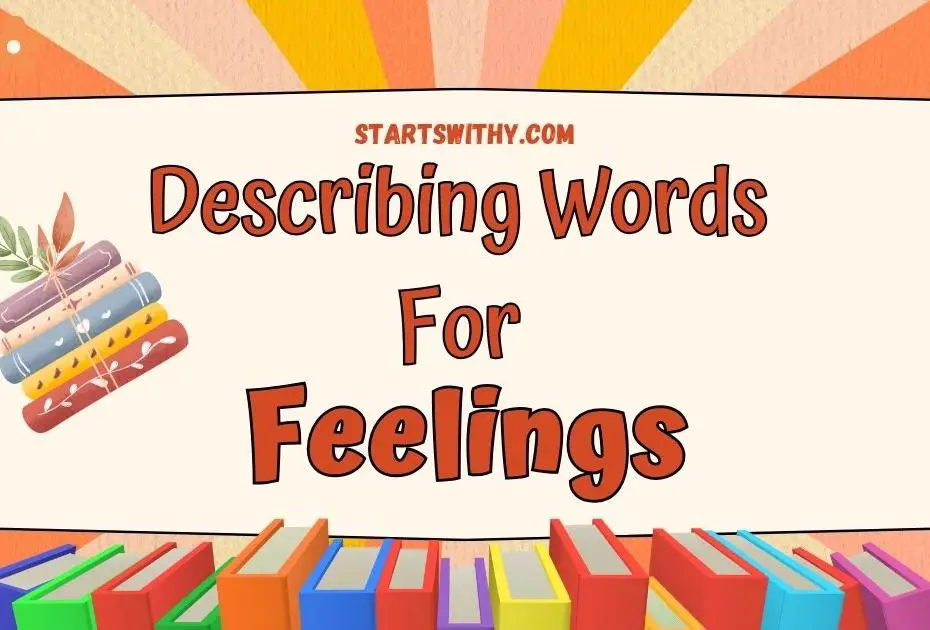
Adjectives for Feelings: Enhance Emotions with Powerful Words
When it comes to expressing our emotions, sometimes words alone… Read More » Adjectives for Feelings: Enhance Emotions with Powerful Words
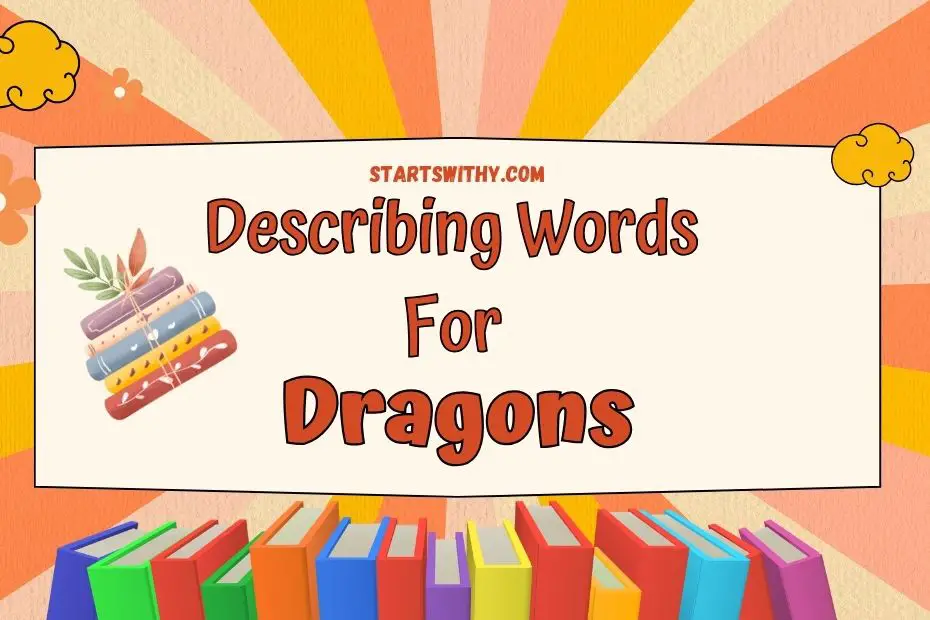
Dragon Adjectives – Descriptive Words & Examples
Dragons have long captured our imaginations with their majestic presence… Read More » Dragon Adjectives – Descriptive Words & Examples
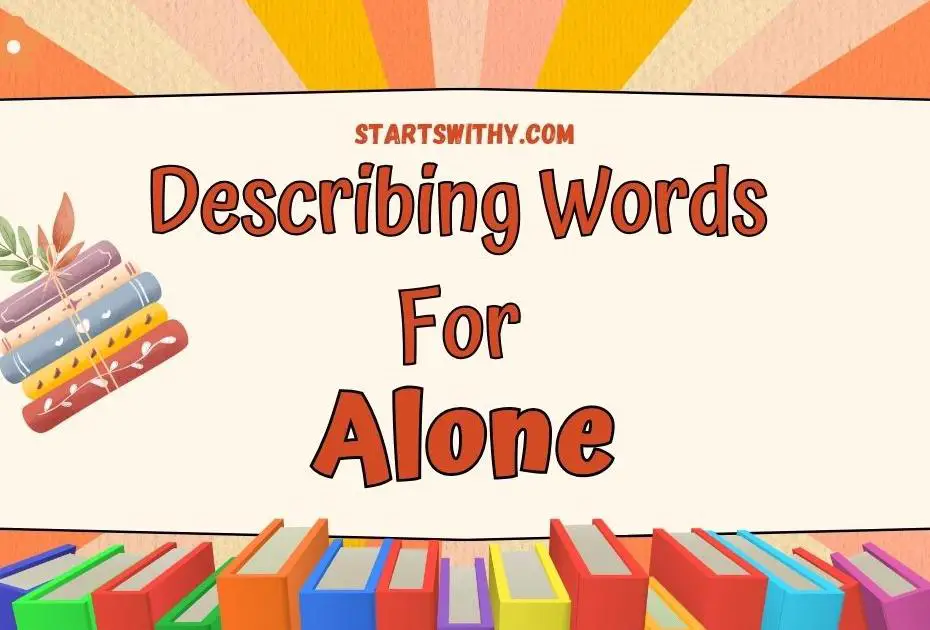
Alone Adjectives: Describing Words & Examples
When it comes to describing the feeling of being alone,… Read More » Alone Adjectives: Describing Words & Examples

The Top 20 Descriptive Paragraph Examples
Written by Dan
Last updated March 20, 2024
Are you tired of hearing your students say, “I don’t know how to write a descriptive paragraph!”? If so, you’re not alone! Writing compelling descriptions can be one of the most challenging parts for teachers and students.
But it doesn’t have to be so tricky! With suitable examples and guidance, anyone can become an expert in vividly describing people, places, things or events.
Before jumping into the deep end of resources out there, it’s a good idea for students to check out websites offering free essay samples, like StudyMoose .These platforms provide a wide range of free essays that can help students enhance their writing skills.
In this blog post, I will provide twenty stellar examples you can use as models for teaching your students how to write compelling descriptive paragraphs.
Related : For more, check out our article on Building Suspense In Writing here.
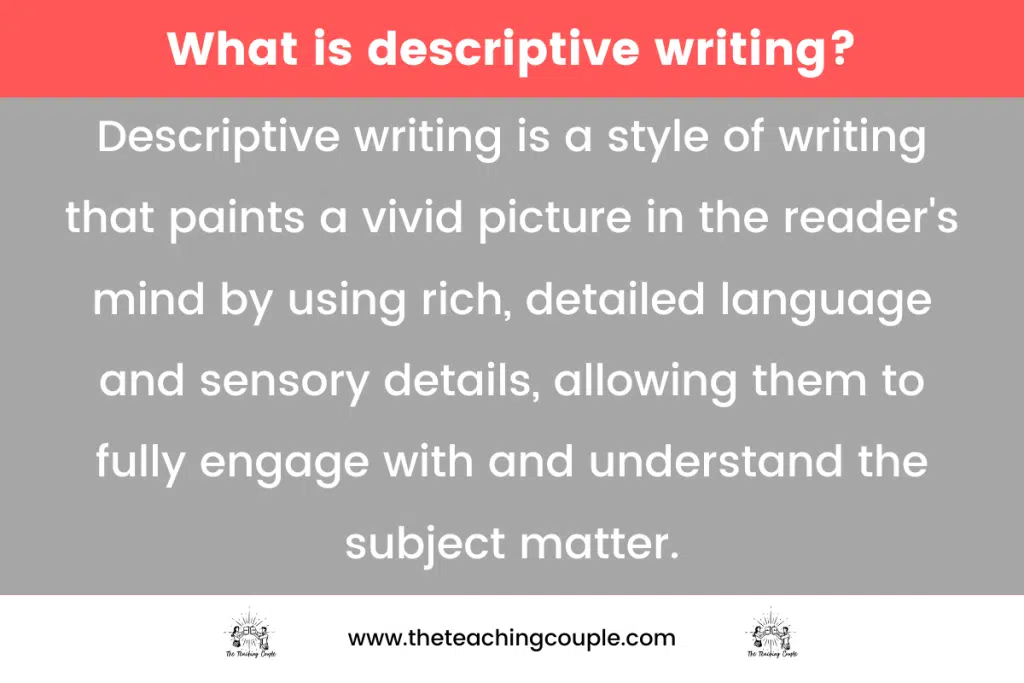
According to Grammarly , descriptive writing can enhance content, from an essay describing a historical event to a blog post narrating a personal experience.
IUP’s Writing Center further explains that effective descriptive writing evokes sights, smells, sounds, textures, and tastes, immersing readers in the narrative. But how does one master this craft?
Study.com provides a comprehensive lesson on the techniques and examples of descriptive writing, while LanguageTool offers insights into the illustrative writing style.
Table of Contents
Descriptive Paragraph Example 1:
The sun-kissed beach was a veritable haven. Soft, white sand stretched lazily from one end of the coastline to the other, inviting visitors to take off their shoes and dip their toes in the cool water.
Warm sunshine beat down on my skin as I walked along the smooth shoreline, enjoying the salty ocean breeze that greeted me with each step. In the distance, I could see boats anchored in the harbour, their masts swaying gracefully with the rhythm of the waves.
Descriptive Paragraph Example 2:
The older man shuffled slowly down the dirt road, a faded baseball cap pulled low over his eyes to shield them from the sun’s rays. He wore overalls and a flannel shirt, his hands calloused from years of hard work in the fields.
His face was craggy but kind- a life filled with stories hidden beneath the wrinkles that framed his eyes. I watched him as he walked, his steps light despite the weight of all he had seen.
Descriptive Paragraph Example 3:
The bustling city street was a melting pot of cultures, languages, and flavours. As eager shoppers stopped to examine their wares, merchants called out from their booths. Everywhere I looked, people were walking, talking, laughing- the occasional honk of a car horn punctuating the air.
The smells were a mix of mouthwatering cuisine from dozens of countries, the sound of different languages intermingling as the conversation drifted through the air.
Descriptive Paragraph Example 4:
The lush meadow was blanketed in soft green grass, punctuated with wildflowers in all rainbow colours. The sun shone brightly in the sky, warming everything beneath it with its gentle rays. In the distance, a stream babbled peacefully as birds chirped their songs from the trees that lined it.
The air was heavy with the sweet scent of honey, and I closed my eyes to take in all of its beauty.
Descriptive Paragraph Example 5:
The forest was alive with activity; small creatures skittered through the undergrowth while bright-coloured birds flitted from branch to branch overhead. A cool breeze caressed my skin and rustled through the leaves of nearby trees as I walked along the path, breathing deeply of the damp woodland air.
Everywhere I looked, lush greens and browns reminded me that life was flourishing here in this small corner of the world.
Descriptive Paragraph Example 6:
The ancient ruins surrounded a vast desert, their sand-covered stones looking out over miles of wind-swept dunes. I walked through the crumbling archway and into the courtyard, taking in the eerie silence that pervaded the entire site.
The sun beat down from above, its rays glinting off broken columns and walls that told stories of a forgotten time. Here was evidence of an ancient civilization that had disappeared into history.
Descriptive Paragraph Example 7:
The decrepit old mansion stood atop a hill like a silent sentinel watching over the valley below. Tall windows stared blankly from the walls, their glass panes long since shattered. The grounds were overgrown with weeds and wildflowers, a testament to the fact that no one had set foot here in many years.
I stepped through the doorway and into what felt like an entirely different world- a place filled with secrets and stories waiting to be discovered.
Descriptive Paragraph Example 8:
The silver moon shone brightly against the night sky, its reflection glittering on the lake’s still surface below. Fireflies sparkled around me like stars fallen from the heavens, their lights twinkling with those of distant galaxies.
Crickets chirped softly as they scuttled across my path while owls hooted in the distance. Everything felt peaceful and calm, like time had stopped to admire this magical moment.
Descriptive Paragraph Example 9:
The beach was a tranquil paradise, soft white sand stretching towards an endless blue horizon. The waves crashed gently against the shore, their foamy spray cooling my skin under the hot afternoon sun.
Seagulls hovered overhead, crying as they searched for food along the shoreline. Everywhere I looked, there was beauty; everything seemed perfect at that moment, from the towering palm trees to the sparkling sea below.
Descriptive Paragraph Example 10:
The snow-capped mountain peak rose majestically above me, its rocky sides glinting in the bright sunlight. I could feel the chill of the air around me and see my breath misting in front of me as I trudged up the steep path.
All was silent except for a few birds singing in the distance and the occasional avalanche tumbling down one of the nearby slopes. Everywhere I looked, there were breathtaking views and a sense of awe at being so close to such a powerful force of nature.

Descriptive Paragraph Example 11:
The sun was setting, painting the sky in vibrant shades of orange, pink and purple. The clouds were streaked with golden light, completing the brilliant spectacle that was taking place all around me.
I stopped to take it all in, feeling deep gratitude and awe at witnessing such a beautiful sight. All my worries seemed so far away at that moment; here, nothing else mattered but enjoying this fantastic view.
Descriptive Paragraph Example 12:
The dusty roads wound their way through the rolling hills of the countryside, lined by ancient trees whose roots had grown deep over centuries. Wildflowers flourished in splashes of colour against the backdrop of green fields and blue sky.
The air was sweet with the scent of fresh-cut hay and the buzzing of bees. There was a beauty that could only be found in nature, a timeless reminder of the power and magnificence of the world around us.
Descriptive Paragraph Example 13:
The city skyline glowed in all its glory against the night sky, its skyscrapers towering majestically above me. Cars whizzed by on crowded streets, neon signs flashing in their wake, while music drifted through the air from distant clubs and bars.
People bustled about their business with purpose and energy, carrying an infectious enthusiasm for life. Everywhere I looked, I saw evidence of progress and growth; it was a sight that reminded me just how vast and varied our world is.
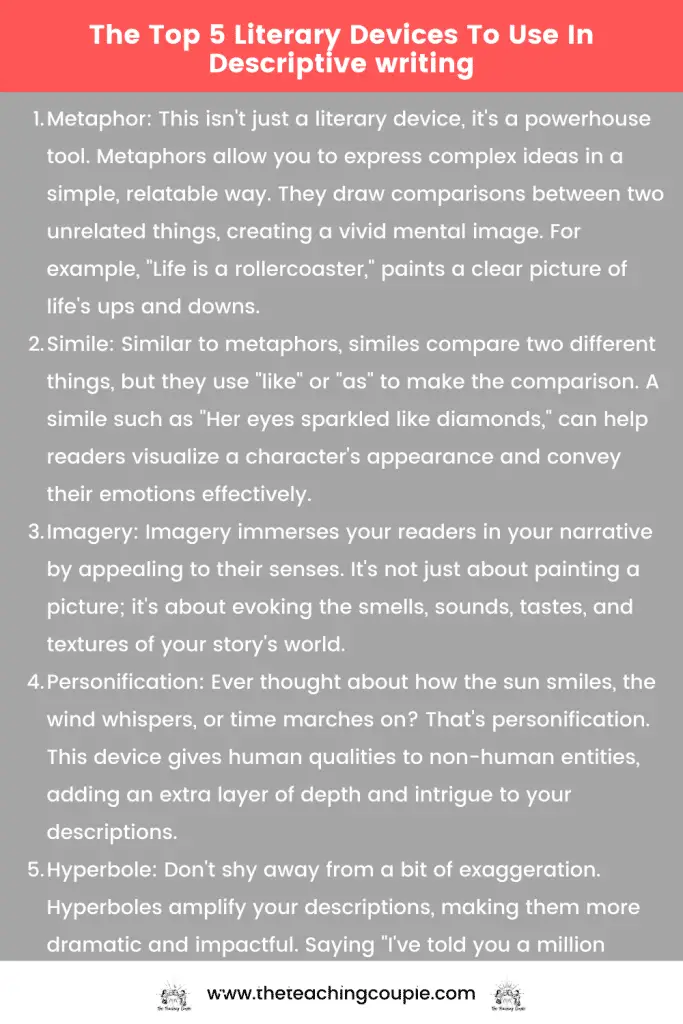
Descriptive Paragraph Example 14:
The desert stretched out before me, a vast expanse of red sand and sun-bleached rocks. The heat was oppressive but calming, the warm breeze carrying an earthy scent. In the distance, I could see dust devils whirling across the dunes, throwing up clouds of golden sand in their wake.
It felt like a place stuck in time, where one could take refuge from the frenetic pace of modern life and find solace in nature.
Descriptive Paragraph Example 15:
The forest was alive with sound and colour; birdsong filled the air while shafts of sunlight pierced through the canopy above, dappling the ground below with splashes of gold.
The trees stood tall and proud, their leaves rustling in the gentle breeze. Everywhere I looked, there was evidence of life; from the scurrying squirrels to the buzzing insects, it seemed as if everything had been frozen in perfect harmony and balance. It was an enchanting sight that made me feel profoundly alive.
Descriptive Paragraph Example 16:
The lake shimmered in the afternoon light, its still waters reflecting the clouds above. The sun shone brightly in a deep blue sky, making everything around me seem alive and vibrant. I could feel the warmth of the sand beneath my feet as I walked along the beach, watching the waves lap against the shoreline.
Everywhere I looked, there was beauty; from the towering mountains on either side to the lush greenery that covered them, it was an idyllic setting that filled my heart with joy.
Descriptive Paragraph Example 17:
The stars twinkled in all their glory above me, casting an ethereal glow over everything below. I stood in awe, my eyes searching the night sky for constellations. The moon shone brightly, its pale light illuminating the darkness and giving everything an otherworldly feel.
It was a breathtaking sight that reminded me of the power and mystery of our universe. Here I could escape from my troubles and bask in the beauty of nature’s grandeur.
Descriptive Paragraph Example 18:
The thunder roared as it rolled across the horizon, creating a rumbling sound that could be felt deep beneath my feet. Lightning crackled above, illuminating the sky with flashes of brilliant white light. The rain poured down in sheets, washing away all traces of dirt and dust from everything it touched.
This violent storm was both awe-inspiring and frightening in its intensity, a reminder of the unpredictability of nature. I felt as though I was witnessing something that could never be recreated; a moment of beauty and power that would stay with me forever.
Descriptive Paragraph Example 19:
The autumn air was crisp and clean, filled with the smell of fallen leaves and freshly cut wood. The last rays of sunlight cast an orange hue over everything, creating an ethereal atmosphere that seemed almost magical.
Everywhere I looked were vibrant red, gold, and orange shades as trees shed their leaves for the winter ahead. It was a beautiful sight that reminded me how quickly time passes and how we must cherish each moment before it slips away. It was a reminder of just how vast and varied our world is.
Descriptive Paragraph Example 20:
The snow fell softly from the sky, blanketing the world in a thick layer of white. C crystalline frost covered trees, and icicles hung from rooftops, their needles glistening in the pale moonlight.
Everything was still and silent; it felt like I was the only living soul for miles. With each breath, the cold air filled my lungs, and I savoured this moment of peace, so pure and untouched by modern life. This was nature at its finest, a reminder of how fragile our existence is.
1. What is descriptive language?
Descriptive language is a literary tool used by writers to paint vivid pictures in the reader’s mind. It involves using adjectives, adverbs, metaphors, similes, and other figurative language to describe a scene, person, or situation in detail.
2. Why is descriptive language important in descriptive paragraphs?
The essence of a descriptive paragraph lies in its ability to create a clear and vivid image in the reader’s mind. Descriptive language is instrumental in achieving this, as it adds depth, detail, and color to your writing, making it more engaging and relatable for your audience.
3. Can you give an example of descriptive language?
Absolutely! Consider this sentence: “The sun set over the ocean.” Now, let’s add some descriptive language: “The fiery sun slowly sank beneath the horizon, casting a golden glow over the tranquil, azure ocean.”
4. How can I improve my use of descriptive language?
Practice makes perfect! Try to incorporate descriptive language into your everyday writing. Read widely to expose yourself to different styles of descriptive writing. Experiment with various literary devices such as metaphors, similes, and personification.
5. Does using more adjectives and adverbs make my writing more descriptive?
Not necessarily. While adjectives and adverbs play a key role in descriptive writing, it’s essential to use them judiciously. Too many can make your writing seem overwrought and confusing. The goal should be clarity and precision.
6. How does descriptive language contribute to the tone of a paragraph?
Descriptive language can significantly influence the tone of a paragraph. For instance, using words like ‘gloomy’, ‘dreary’, or ‘haunting’ can create a dark or melancholic tone, while words like ‘vibrant’, ‘lively’, or ‘sparkling’ can evoke a more upbeat and positive tone.
7. Can descriptive language be used in all types of writing?
While descriptive language is most commonly associated with creative writing, it can be effectively used in almost all types of writing, including academic, business, and online content marketing, to engage readers and make the content more memorable. Remember, mastering descriptive language is a journey. Keep practicing, keep experimenting, and most importantly, keep having fun with your words. After all, isn’t that what writing is all about?
Related Posts
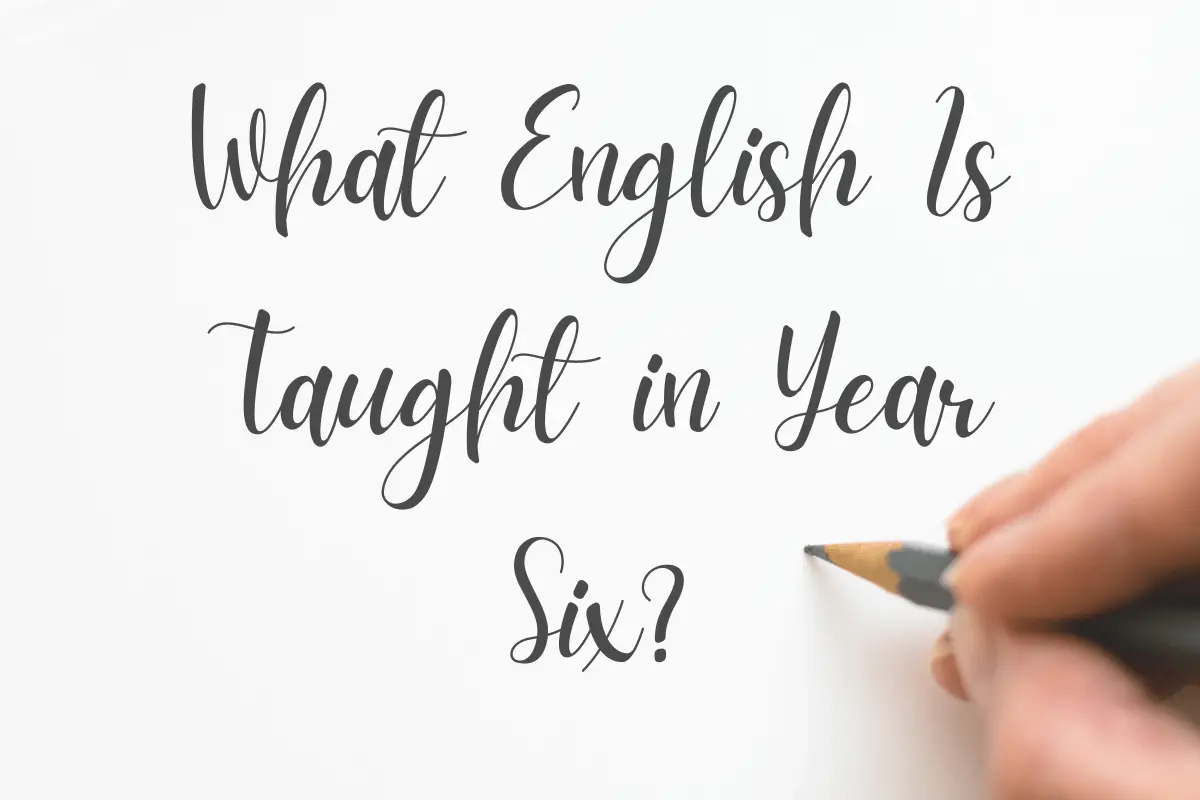
About The Author
I'm Dan Higgins, one of the faces behind The Teaching Couple. With 15 years in the education sector and a decade as a teacher, I've witnessed the highs and lows of school life. Over the years, my passion for supporting fellow teachers and making school more bearable has grown. The Teaching Couple is my platform to share strategies, tips, and insights from my journey. Together, we can shape a better school experience for all.

Join our email list to receive the latest updates.
Add your form here

Descriptive Writing – Format, Examples And Techniques Of Descriptive Writing
Rasipuram Krishnaswami Iyer Narayanaswami, popularly known as R. K. Narayan, was one of the finest Indian writers. Known for his…

Rasipuram Krishnaswami Iyer Narayanaswami, popularly known as R. K. Narayan, was one of the finest Indian writers. Known for his Malgudi series, Narayan left his mark through extraordinarily simple and unpretentious writing style. He drew inspiration from his real life and his ability to juxtapose reality with fiction is a common tactic used by descriptive writers.
More often than not, we use descriptive writing in our email and text messages, without even realizing it. Anybody can learn how to become a descriptive writer, with patience and practice. Let’s explore what is descriptive writing and how it can benefit us in a business environment?
Descriptive Writing: Meaning & Types
How to master the art of descriptive writing, descriptive writing: meaning and types.
As the name suggests, descriptive writing is a type of writing where an author describes a person, place or object. The purpose of descriptive writing is to help readers visualize everything that’s written. In other words, readers imagine themselves to be a character in the story, experiencing different events and situations. It creates sensory experiences by describing, illustrating, persuading and demonstrating descriptive details.
Descriptive writing techniques help you become experimental and creative. You pay attention to detail and become more observant. Not only does it change the way you write, but it also influences the way you interact with others. Being well-versed with a descriptive writing format is an important skill in the workplace. Whether you want to pitch new ideas or write convincing emails, descriptive writing is the way to go. You’ll be able to hold your readers’ attention and engage them in ways like never before!
To paint a vivid picture in the minds of your readers, here are the various examples of descriptive writing that explore its different kinds.
Location Description
You describe places and want to connect to a memory that transpired in a particular place. For example, you met a potential investor at a business conference. If you reach out to them, remember to talk about where and how you both met.
Action Description
You describe what your characters are doing. For example, you have to present a progress report of the project your team is doing. Look at every member as an individual character who is contributing to the project in their own ways.
Emotion Description
You describe the emotions that your characters are feeling. For example, while drafting a congratulatory email, you’re likely to have an emotional tone and describe your feelings. It helps you connect with your readers better.
How To Master The Art Of Descriptive Writing
Writing is one of the most crucial business communication skills. Whether you’re looking for a new job or asking for a letter of recommendation, your style, tone and language matter a lot. Well-crafted descriptive writing will help you get into essential details without sounding boring. Here are some of the top descriptive writing techniques that’ll effectively get your message across.
Show, Don’t Tell
One of the most useful tactics is to sprinkle specific details that appeal to the readers’ senses. Sensory information helps them experience the description more closely, captivating their attention and interest.
Exaggerate In Moderation
Figurative language is a powerful literary device that can paint instant pictures of your characters or settings. Similes and metaphors are some of the common tools but even onomatopoeia (words that sound like what they mean; e.g., tick-tock) can make a difference. Brands often use this device for slogans and advertisements.
Surprise Your Readers
Descriptive writing gives you the liberty to pepper your sentences with surprising elements i.e., more interesting words. For example, instead of a cold mountain, you can describe it as a sleepy mountain. Using unique adjectives will keep your writing fresh and your readers interested.
Prompt For Prompts
Create your own mystery box by writing a few ideas or words in small pieces of paper and tossing them inside a box. You can grab a piece at random and use it to enhance your writing. You can even describe the way you feel about the object or what you think about it. Be adventurous and try out challenging ways to describe things.
What Do You See?
Before you paint mental images for others, take time to understand how you visualize a character or a setting. What do your five senses tell you? A good way to expand your sensory experiences is to read comic books or graphic novels. Replicate tactics from your favorite authors and make note of what you experience.
Harappa Education’s Writing Proficiently course will help structure your thoughts, polish your writing style and teach you to write clearly, concisely and compellingly. The SCQR—Situation, Complication, Question and Resolution—Framework will guide you in enhancing your storytelling skills and tactics. The tried-and-tested methods will make your business communication so effective that everyone sits up and takes notice!
Explore topics such as Significance of Writing Skills , Different Types of Writing Styles , Expository Writing , Process of Writing & How to Write an Email from Harappa Diaries and polish your writing skills.

- Primary Hub
- Art & Design
- Design & Technology
- Health & Wellbeing
- Secondary Hub
- Citizenship
- Primary CPD
- Secondary CPD
- Book Awards
- All Products
- Primary Products
- Secondary Products
- School Trips
- Trip Directory
- Trips by Subject
- Trips by Type
- Trips by Region
- Submit a Trip Venue
Trending stories

Top results

- Setting Description Ks2 How To Create Powerful Settings For Stories
Setting description – Resources & advice for writing outstanding settings

Use these strategies and resources to give children the tools they need to create powerful settings for their stories…

A setting description can go a long way towards establishing the atmosphere of a narrative and giving it a sense of tangible reality for the reader. Yet, we often under-emphasise this when it comes to teaching story writing skills.
Use these downloadable resources and advice from teacher Sue Drury to up your students’ game when it comes to writing a good setting description…
Setting description resources
Advice for creating powerful settings for stories, wagoll resource pack.
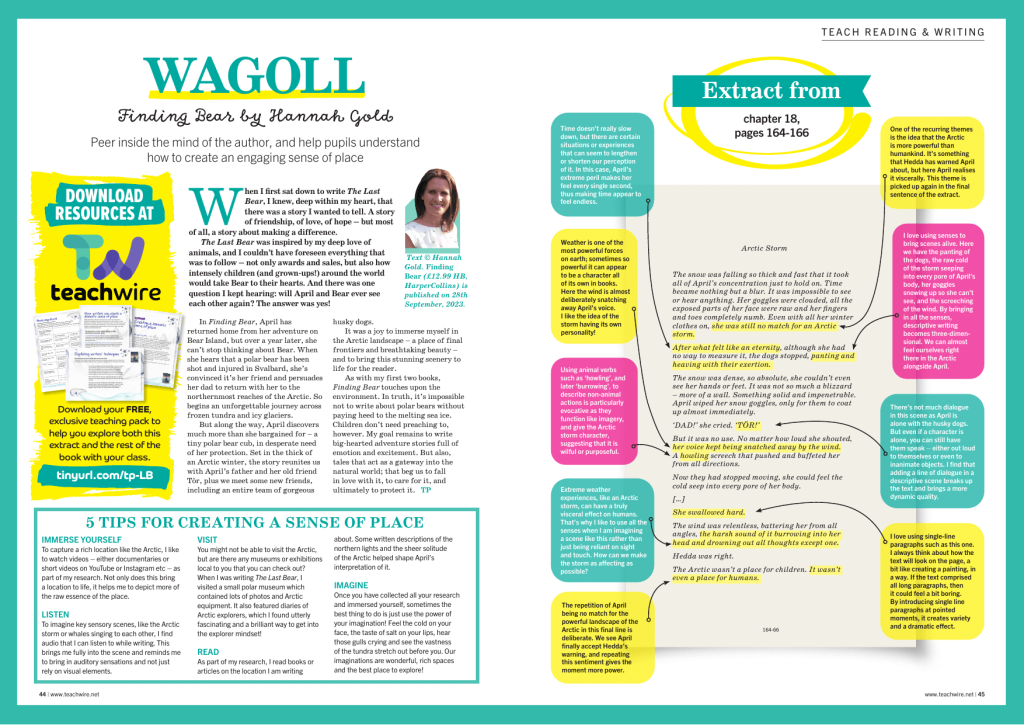
Use this free WAGOLL and accompanying worksheets to help pupils refine their descriptive writing skills. The example comes from Finding Bear by Hannah Gold. You’ll get teacher notes, worksheets, an extract from the book plus working wall resources and more.
Pie Corbett model text
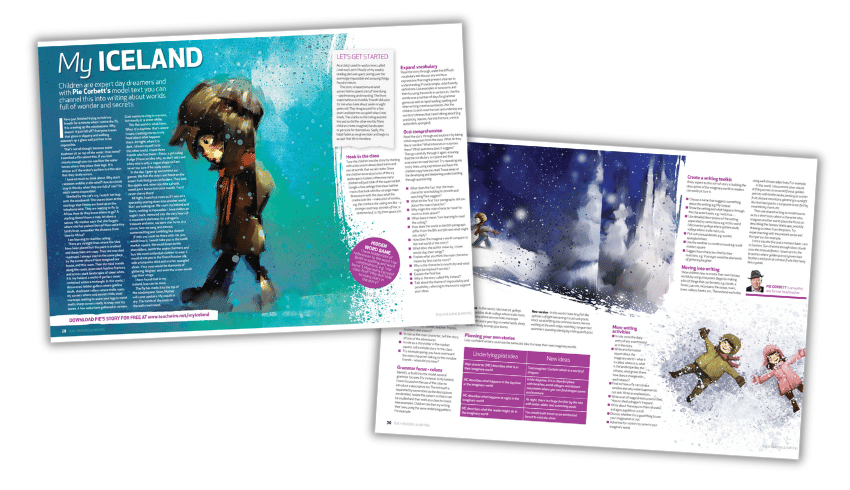
Use Pie Corbett’s imaginary worlds KS2 model text to help pupils write about settings full of wonder and secrets. The download contains Pie’s original story, My Iceland , plus an accompanying lesson plan full of reading and writing ideas and activities.
Science fiction writing inspiration
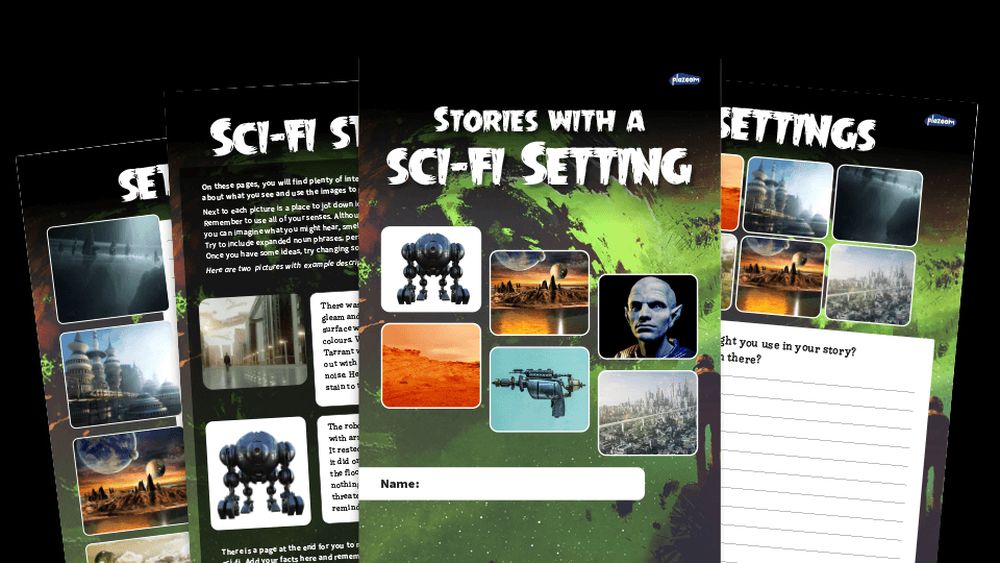
This KS2 story writing inspiration pack from literary resources website Plazoom helps children develop high-quality writing around a science fiction theme. It features pictures, short example texts and a story planner workbook to help pupils on their way.
Setting soup worksheet
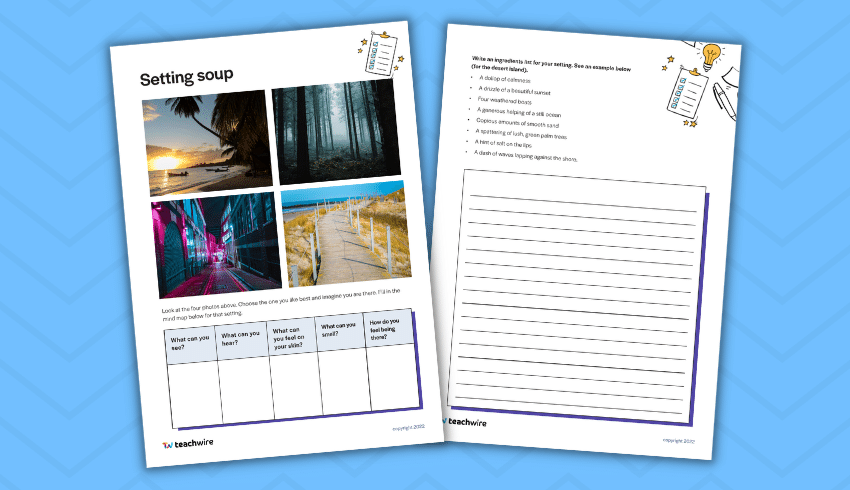
This free creative writing worksheet features four intriguing setting photos. Pupils need to select their favourite and then fill in a mind map about it, imagining what they see, hear, feel and smell. Next they need to create an ingredients list for their setting, such as:
- A dollop of calmness
- A drizzle of a beautiful sunset
- A generous helping of a still ocean
Create a magical World Cup setting
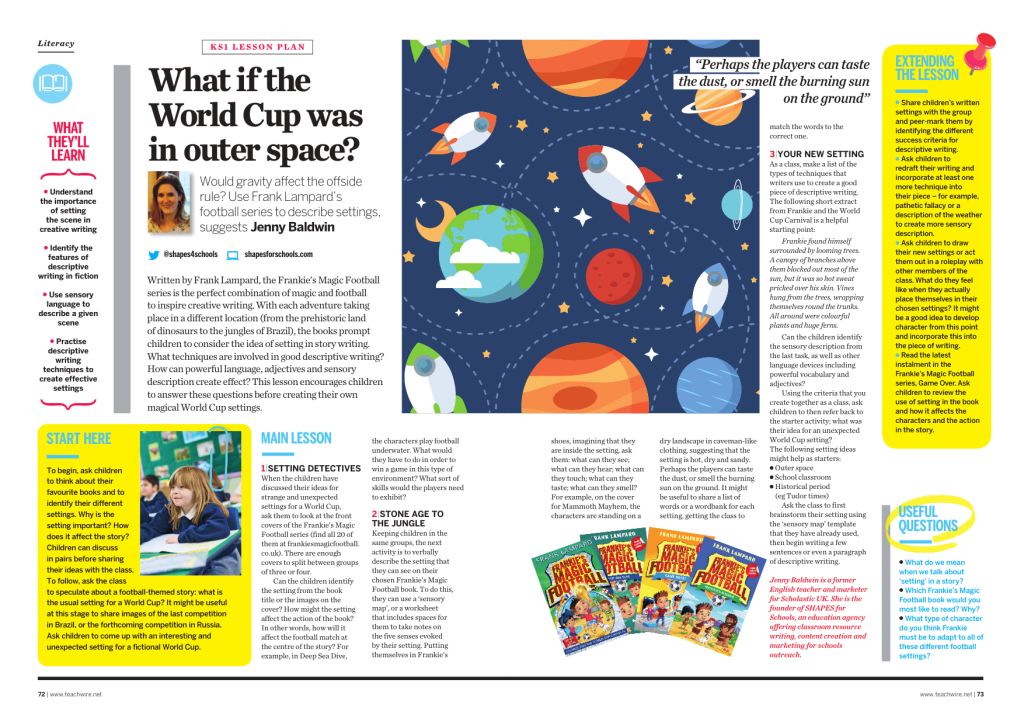
What if the World Cup was in outer space? Would gravity affect the offside rule? This KS1 lesson plan encourages children to create their own magical World Cup settings. Pupils will learn the importance of setting the scene in creative writing and how to identify the features of descriptive writing in fiction.
Passing through the portal worksheet
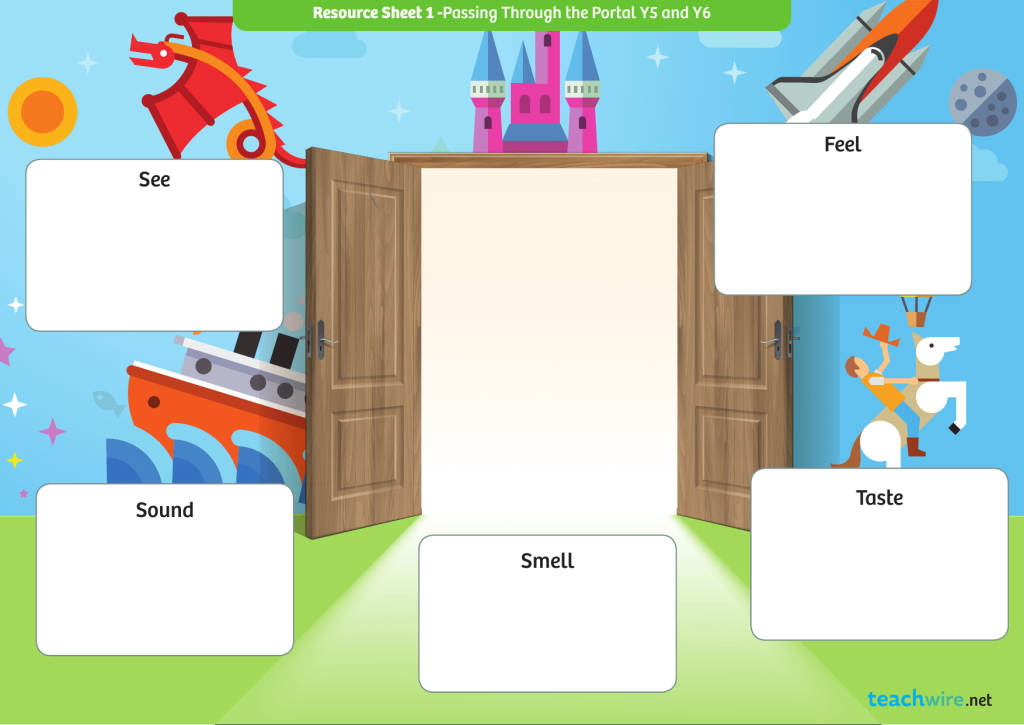
Authors frequently use doors and portals to structure fantasy stories, making them useful devices for KS2 descriptive writing. This worksheet , with accompanying teacher notes, scaffolds the process by providing a space for a drawing of a setting and spaces for pupils to write descriptive phrases based on their senses.
KS3 Gothic setting description lesson plan
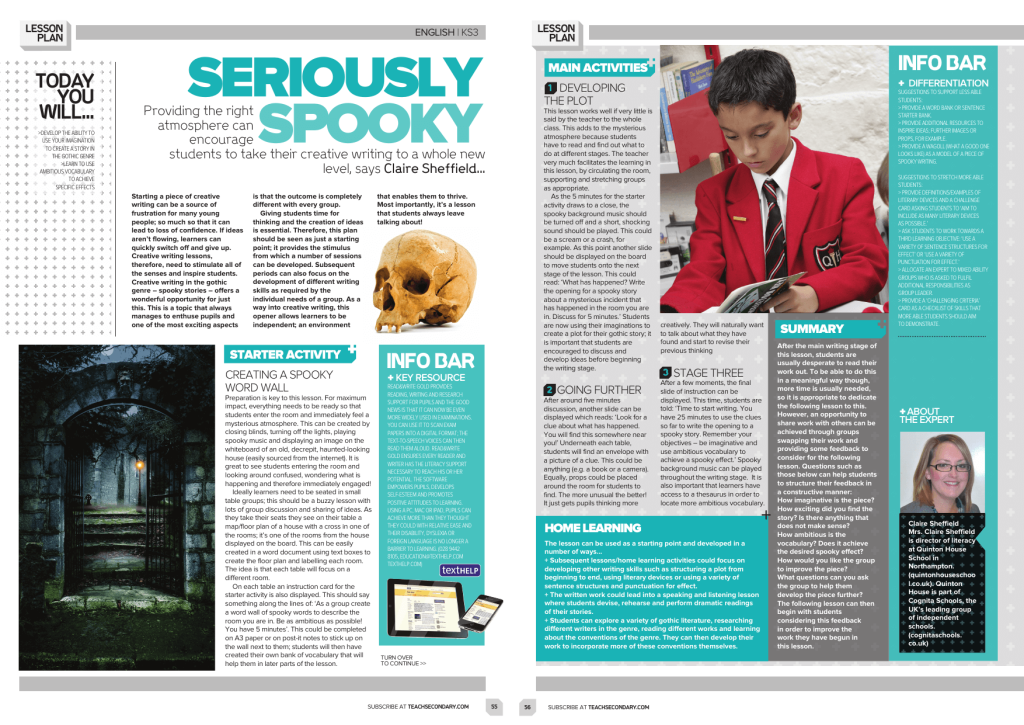
This Gothic setting description lesson plan for KS3 will encourage students to take their creative writing to a whole new level. Begin by closing the blinds, turning off the lights, playing spooky music and displaying an image of a haunted-looking house…
Use these simple strategies from teacher Sue Drury to give children the tools they need to create powerful settings for their stories…
As with all good creative writing, an engaging story starts with a good plan. As well as outlining the characters , overall plot, important events and so on, it’s essential that this contains detailed information about any settings.
Encourage your pupils to form a clear picture in their heads of these locations. Note down key words and rich descriptions. Try getting them to close their eyes and sit in silence while they create vivid pictures with their minds. They can then convert these into great descriptive writing.
What’s more, urge them to focus on the little things as well as the big backdrops. After all, details often make a memorable difference.
“Urge them to focus on the little things as well as the big backdrops”
One of the first things to encourage your pupils to do is to engage all their senses when writing the setting. The temptation is often just to describe what can be seen. However, sounds and smells can often connect more powerfully with people than what merely meets their eyes.
Even the sense of touch, like the chilling caress of a sudden breeze, can add to the atmosphere.
Writing success criteria – show not tell
There are few hard and fast rules governing how to write a setting description. However, ‘show not tell’ has to be one of them. Although this is more straightforward when describing characters and actions, it can be applied to settings in the way that the protagonists interact with their surroundings.
Even so, this does not totally negate the need for precise and evocative vocabulary.
“There are few hard and fast rules governing how to write a setting description”
As much as we like to encourage pupils to use their very best words, it’s possible to have too much of a good thing. Encourage children to focus on the things that really contribute to the establishment of a convincing setting and actually matter to the progress of the plot.
Historical setting description creative writing skills
Different fiction genres place different demands on the writer when it comes to setting the scene. Take historical novels for example. Part of the joy of these stories is that they can also function as a sort of informal history lesson. They provide a fascinating insight into how people used to live.
That is why it is so important to help your pupils make the settings as realistic as possible. They need to include details that have a chance of informing as well as entertaining.
Of course, not all stories are set in the real world. Although science fiction and fantasy give writers more scope for letting their imaginations run free, they do need to have some form of containment – otherwise the reader will be just too bamboozled to read very far. That is when planning becomes particularly important.
Once your pupils are happy with their plans, they still need to weave all the details into a coherent tale. Never underestimate how difficult this might be for KS2 children. You might even find it necessary to provide more structured writing frames for when they ultimately start composing their stories.
Nevertheless, with a good setting firmly embedded in their minds, at least they won’t be starting with a blank canvas.
Sue Drury is literacy lead at Plazoom , the expert literacy resources website. Follow Plazoom on Twitter at @plazoomshop .
Sign up to our newsletter
You'll also receive regular updates from Teachwire with free lesson plans, great new teaching ideas, offers and more. (You can unsubscribe at any time.)
Which sectors are you interested in?
Early Years
Thank you for signing up to our emails!
You might also be interested in...
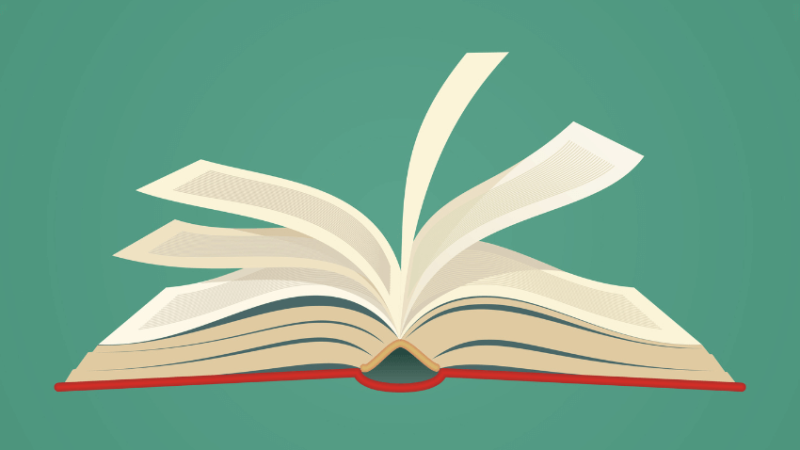
Why join Teachwire?
Get what you need to become a better teacher with unlimited access to exclusive free classroom resources and expert CPD downloads.
Exclusive classroom resource downloads
Free worksheets and lesson plans
CPD downloads, written by experts
Resource packs to supercharge your planning
Special web-only magazine editions
Educational podcasts & resources
Access to free literacy webinars
Newsletters and offers
Create free account
I would like to receive regular updates from Teachwire with free lesson plans, great new teaching ideas, offers and more. (You can unsubscribe at any time.)
By signing up you agree to our terms and conditions and privacy policy .
Already have an account? Log in here
Thanks, you're almost there
To help us show you teaching resources, downloads and more you’ll love, complete your profile below.
Welcome to Teachwire!
Set up your account.
Lorem ipsum dolor sit amet consectetur adipisicing elit. Commodi nulla quos inventore beatae tenetur.
Log in to Teachwire
Not registered with Teachwire? Sign up for free
Reset Password
Remembered your password? Login here


IMAGES
VIDEO
COMMENTS
By Jordan. No Comments. Vivid story setting descriptions helps us anchor a story's action in place. Listed below are story setting description examples that reveal the varied functions of setting description. 1. Use setting description to highlight characters' turning points. What characters do in a place tells us a lot about their personality.
In literature, a story setting is when and where the action takes place. Your story's setting establishes the environment of the fictional world that will be planted in the reader's mind as they read through your creative writing. Fleshing out your setting isn't just for fantasy worldbuilding —every story can benefit from a detailed ...
Make your description vivid. Consider more senses than just vision. Choose a type of setting you like to work with and learn words attached to that setting so you can include more specific vocabulary. Match your description to the mood of your story. Link your description symbolically to a theme in your story.
I could easily write a year's posts highlighting masterful writing from any one of his novels. And in the series, I'll be pulling more examples from his books. When we talk about description, we're covering wide territory. Narrative is, essentially, description, and via narrative we describe characters, setting, situations, and insights.
Good Examples of Descriptive Writing. ... As you start with descriptive writing, identify exactly what you are setting out to describe. Usually, a descriptive piece will include the depiction of a person, a place, an experience, a situation, and the like. Anything that you experience or perceive about your subject can be the focal point of your ...
Story setting examples. You can probably think of a dozen more setting examples. But just to solidify the notion, here are three particularly strong ones, along with passages to show how each author paints the setting of their story.. Maycomb, Alabama in To Kill a Mockingbird. Harper Lee's unparalleled classic about American race relations in the 1930s takes place in the small town of ...
Using sensory language can really help to convey mood and setting, as well as the overall feeling of a scene. Now, let's add some more description with an embedded clause. The forest was dark and misty, cold and silent. The bare trees, branches thin and spindly, were damp and the moonlight was bright. Fourthly, let's add some imagery.
This is another way to avoid going on and on. Instead of writing one big paragraph describing the setting, weave some of the details into the narrative. (You can do the same thing when you're describing people's looks .) For instance, in the above example, your main character might notice the heat and the peeling paint on the walls right away.
Adjectives like these are unnecessary and can bog down your writing. Simply cut those descriptive words out of the sentence. "The sky was dotted with clouds" conjures the exact same image and is shorter and more focused. 2. Use surprising words. Once your sentences are free of any obvious descriptive details, you have the space to pepper in ...
Visualize stories and places beyond your own with these descriptive writing examples. ... Good descriptive writing creates an impression in the reader's mind of an event, a place, a person, or a thing. The writing will be such that it will set a mood or describe something in such detail that if the reader saw it, they would recognize it.
How To Be Descriptive In Your Writing. There are several ways to use descriptive writing in your text. We'll cover a few of them below and provide examples. 1. Engage senses by using details. Adding specific details helps your readers visualize what you're writing about. The bakery smelled good. ↓.
An example of a short descriptive essay, written in response to the prompt "Describe a place you love to spend time in," is shown below. Hover over different parts of the text to see how a descriptive essay works. Descriptive essay example. On Sunday afternoons I like to spend my time in the garden behind my house.
Descriptive writing is a powerful tool that enables you to create vivid images in your reader's mind. When you use figurative language and sensory details, it creates an immersive experience for your readers, drawing them into your narrative more fully. The use of metaphors, for example, helps you illustrate similarities in ways that are ...
8. Do creative writing exercises. To improve your descriptive writing, try simple exercises. For example, try writing one-paragraph descriptions of places or people. Write a description of a room you know well. Take a location every knows—like New York—and describe the city from a fictional character's point of view.
Setting is a literary device that allows the writer of a narrative to establish the time, location, and environment in which it takes place. This is an important element in a story, as the setting indicates to the reader when and where the action takes place. As a result, the setting of a narrative or story helps the reader picture clear and ...
Clear definition and great examples of Setting. This article will show you the importance of Setting and how to use it. Setting is the time and place (or when and where) of the story. Setting is a literary element of literature used in novels, short stories, plays, films, etc., and usually introduced during the exposition (beginning) of the story along with the characters.
When it comes to creating vivid and immersive scenes in writing, the power of descriptive adjectives cannot be underestimated. Whether you're crafting a story, painting a picture with words, or simply trying to set the mood, the right adjectives can bring any setting to life. In this article, I'll be sharing a collection of adjectives… Read More »Describing Words for Settings: Examples ...
According to Grammarly, descriptive writing can enhance content, from an essay describing a historical event to a blog post narrating a personal experience. ... Descriptive Paragraph Example 11: The sun was setting, painting the sky in vibrant shades of orange, pink and purple. The clouds were streaked with golden light, completing the ...
As the name suggests, descriptive writing is a type of writing where an author describes a person, place or object. The purpose of descriptive writing is to help readers visualize everything that's written. In other words, readers imagine themselves to be a character in the story, experiencing different events and situations.
Encourage children to focus on the things that really contribute to the establishment of a convincing setting and actually matter to the progress of the plot. Historical setting description creative writing skills. Different fiction genres place different demands on the writer when it comes to setting the scene. Take historical novels for example.
Writing descriptively brings text to life. A writer could describe a person, location, object, event, emotion, the weather, an action, landscape and much more. Good descriptive writing allows the ...
27 adjectives to describe your conscientiousness. Highlighting your work ethic, organizational skills, and problem solving abilities is a great way to show hiring managers that you'd be a dedicated employee: Diligent. Attentive. Responsible. Enthusiastic. Industrious. Keen. Observant.